My Pro Secrets to Perfect Zucchini Noodles (No More Watery Messes)
I’ve spent more years than I can count in bustling professional kitchens, and I’ve watched food trends come and go. Some are just a flash in the pan, but others stick around because they genuinely make life better. Zucchini noodles, or ‘zoodles,’ definitely fall into that second camp. They’re a fantastic, lighter alternative to traditional pasta.
In this article
But let’s be honest. I’ve also seen countless plates of them turn into a watery, disappointing mess. The real difference between a crisp, satisfying dish and a soggy bowl has almost nothing to do with the recipe. It’s all about the technique.
I learned this the hard way. Early in my career, a client asked for a low-carb pasta dish. My first attempt was a complete disaster. I treated the zucchini just like spaghetti, and the heat pulled all the water out, leaving me with a soupy sauce and limp, sad noodles. It was humbling, but it taught me something crucial: you can’t cook zucchini without first understanding the zucchini itself. This guide is built on that lesson. I’m not just giving you steps; I’m sharing the professional techniques I’ve perfected to get toothsome, delicious zucchini noodles every single time.
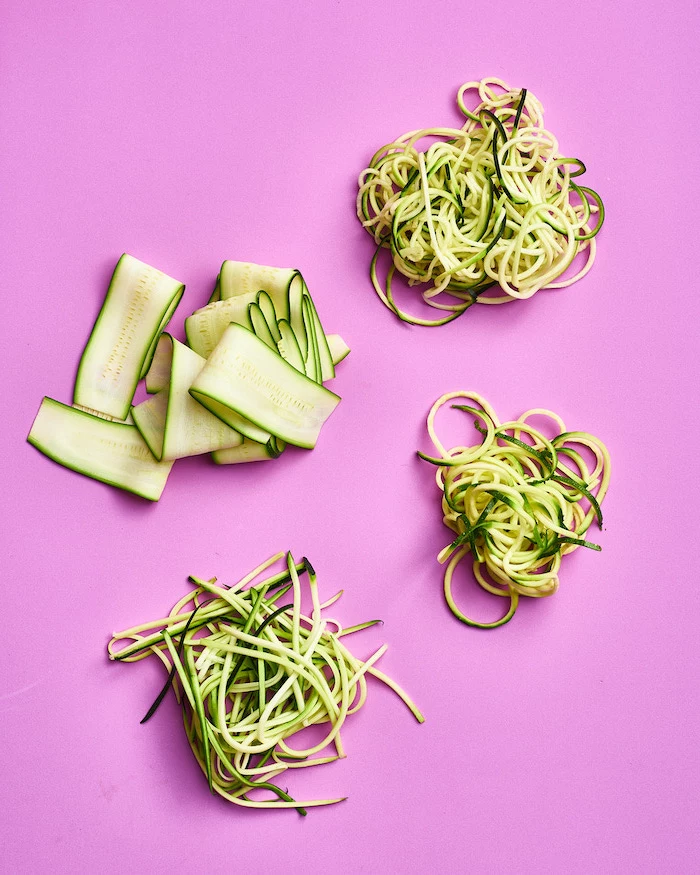
Your Real Opponent: Water
Before you even think about spiralizing, you need to understand the enemy: water. A standard zucchini is over 90% water by weight. This moisture is locked inside the vegetable’s cell walls. The moment you add heat or salt, that water comes pouring out. If you don’t get a handle on this, it will pool in your pan and turn your beautiful sauce into a diluted soup. This is, without a doubt, the number one reason zoodle dishes fail.
So, your first step to success actually happens at the grocery store. Here’s what I always look for:
- Size and Shape: I always grab the small- to medium-sized zucchini, maybe six to eight inches long and relatively straight. Those giant ones? They’re full of water and have big, soft seeds in the middle, which leads to mushy noodles. A straight zucchini is also just way easier to handle.
- Firmness: Give it a gentle squeeze. It should feel solid and firm, with no soft spots at all. A fresh zucchini has a nice density to it. If it feels light or gives too easily, it’s already past its prime.
- Skin: Look for smooth, glossy skin without any nicks. That vibrant green color is a great sign of freshness.
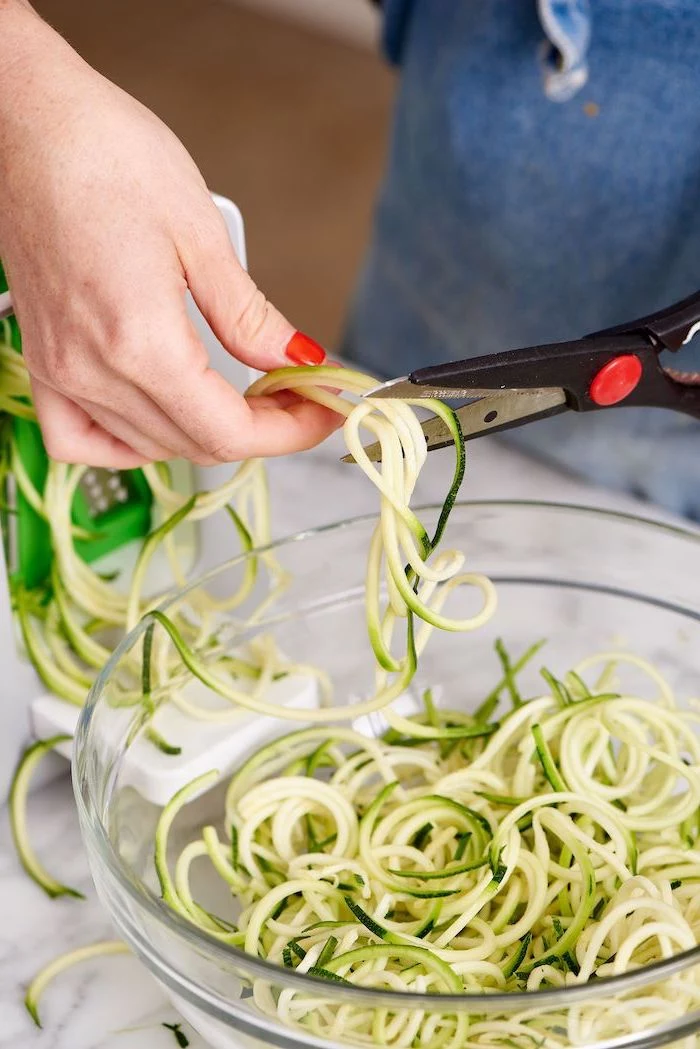
The Single Most Important Step: Getting the Water Out
Okay, here it is. This is the part that most people skip, and it’s the absolute game-changer. If you do only one thing from this guide, make it this. I call it the “sweat and squeeze.”
After you’ve turned your zucchini into noodles (we’ll get to the tools in a second), toss them into a colander in the sink. For every one or two medium zucchinis, sprinkle them with about a half-teaspoon of kosher salt and give them a gentle toss. Now, just let them sit. You need to give them a good 20 to 30 minutes to “sweat.” You’ll literally see the water beading up and dripping out.
Once they’ve sweated, don’t just rinse them! That would defeat the purpose. Instead, grab a handful of the noodles and gently squeeze them over the sink. Then, lay them out on a clean dish towel or a few layers of paper towels and pat them as dry as you can. Be firm but not so aggressive that you crush them into pulp. This step alone will elevate your zoodle game from amateur to pro.
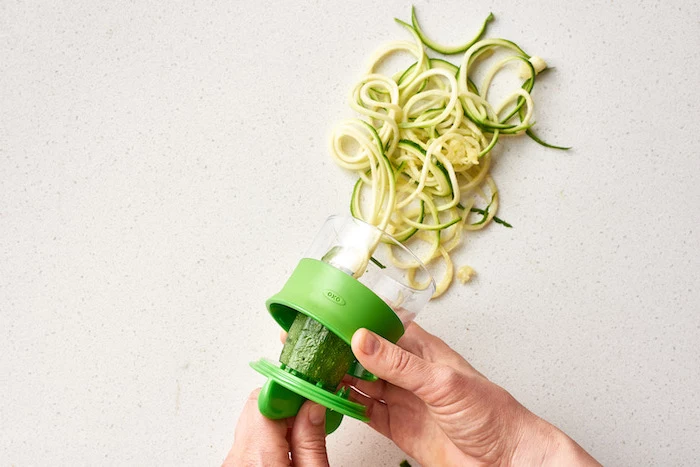
Choosing Your Tool: A Chef’s Breakdown
The gadget you use to make your noodles really does affect their final shape and texture. While you can make do with basic tools, the right one makes a world of difference. Here’s my honest take on the options.
First up is the countertop spiralizer. For anyone who plans on making zoodles regularly, this is the best investment, hands down. You can find decent ones online or at stores like Target for between $25 and $40. Models from brands like Paderno or OXO are usually a safe bet because they have strong suction cups that keep them from sliding all over your counter. A quick tip: To get those long, perfect strands, trim both ends of the zucchini so they’re flat. Center it on the blade, apply steady pressure, and turn the crank. Don’t force it. The result is beautiful, consistent noodles every time. This is my go-to method.

Then there’s the little handheld spiralizer. It’s basically a cone you twist the zucchini into, like an old-school pencil sharpener. To be frank, I’m not a huge fan. They require a lot of wrist strength and you’re always left with an awkward cone of zucchini at the end. But, if you’re short on space or just making a single serving, it’s a cheap option that gets the job done.
A julienne peeler is another great choice, and you might already have one. It’s a peeler with a serrated blade that creates thin matchsticks. You won’t get round spirals, but the long, flat strands are fantastic. Just lay the zucchini on a cutting board and use long, firm strokes from top to bottom. It takes a bit more time, but it costs you nothing if it’s already in your drawer.
Finally, the mandoline slicer. This tool is fast and creates incredibly uniform strands with a julienne blade. But, and this is a big but, it is DANGEROUS. Heads up! I have seen more nasty kitchen injuries from mandolines than from anything else. Always, and I mean ALWAYS, use the safety guard. I once saw a cocky young cook try to finish a potato without it, and he spent the rest of his shift in the ER. The risk is just not worth it.
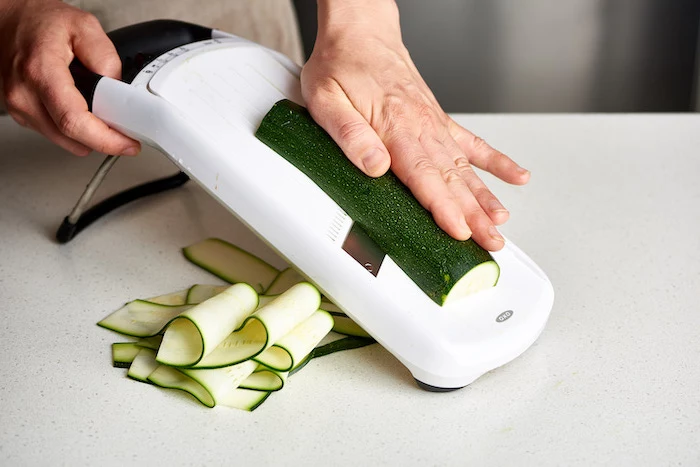
The 90-Second Cooking Rule
After all that prep, the actual cooking is the easiest part. The biggest mistake you can make now is overcooking. You are not boiling pasta; you are just lightly heating a vegetable.
Get a large pan nice and hot over medium-high heat. Add a splash of olive oil, toss in your prepped, dry zoodles, and sauté them for—and I’m serious here—90 seconds to 2 minutes, tops. That’s it! You just want to warm them through. Any longer and they’ll release any remaining water and turn to mush. Oh, and by the way, they’re also delicious served completely raw, especially with a thick sauce or dressing.
Sauce Strategy and Storage
Because zoodles don’t absorb liquid like flour pasta, you need to be smart about your sauce. They love thick sauces that cling, like a hearty bolognese, a creamy Alfredo, or a dense pesto. Thin, watery tomato sauces will just create a puddle at the bottom of your bowl.
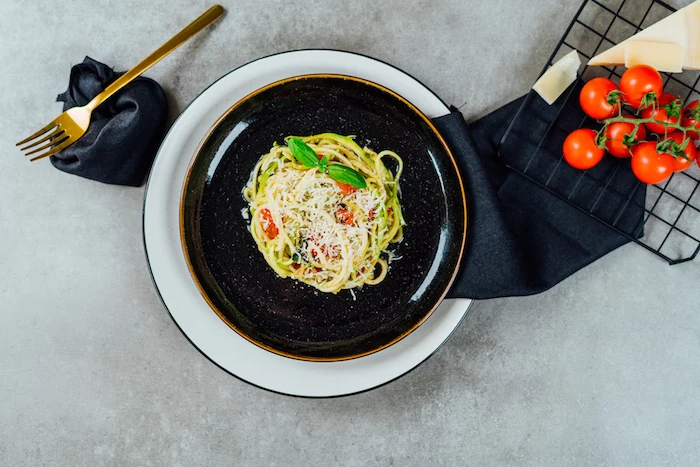
Good to know: You can definitely make zoodles ahead of time. I recommend spiralizing them and storing them in an airtight container with a paper towel at the bottom to absorb any extra moisture. They’ll keep well in the fridge for 2-3 days. I’d wait to do the salting and squeezing step until right before you plan to cook them for the best possible texture.
Inspiration Gallery
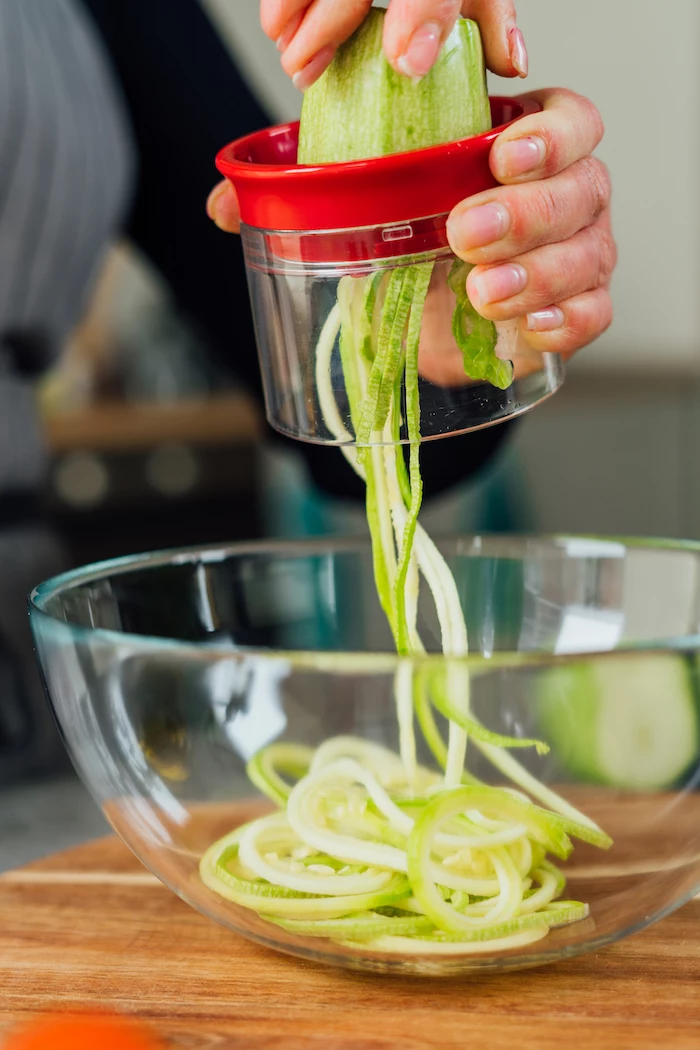
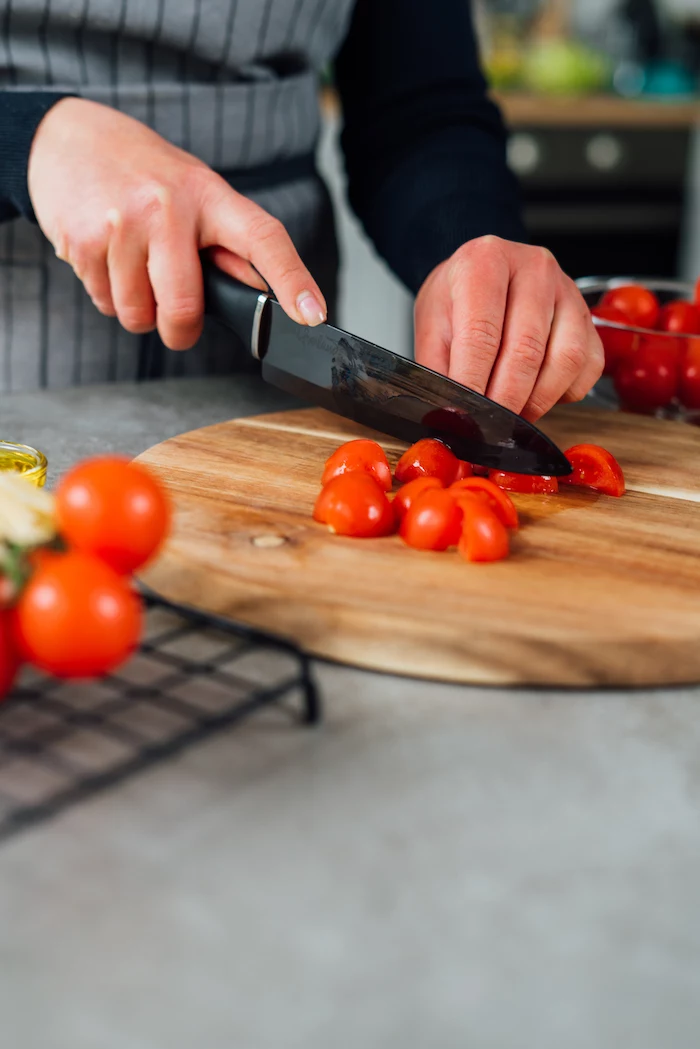
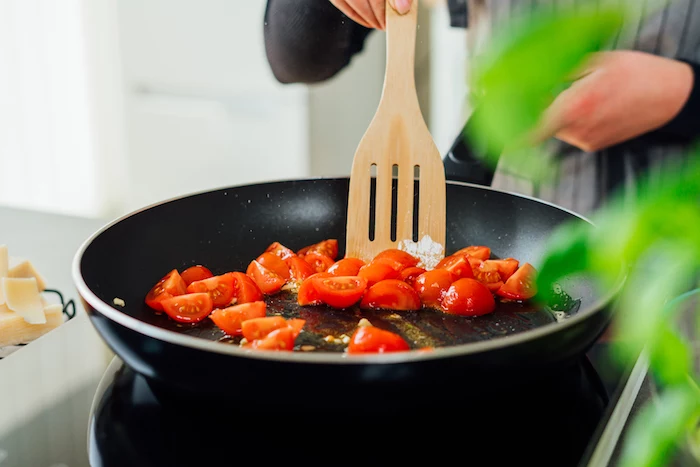
Handheld vs. Countertop Spiralizer: A handheld model, like the OXO Good Grips Handheld Spiralizer, is perfect for small kitchens and occasional use. It’s compact and easy to clean. For zoodle devotees, a countertop model like the Paderno World Cuisine 3-Blade Spiralizer offers more stability and versatility, handling tougher vegetables like sweet potatoes with ease. Your choice depends on your space and how often you plan on making veggie noodles.
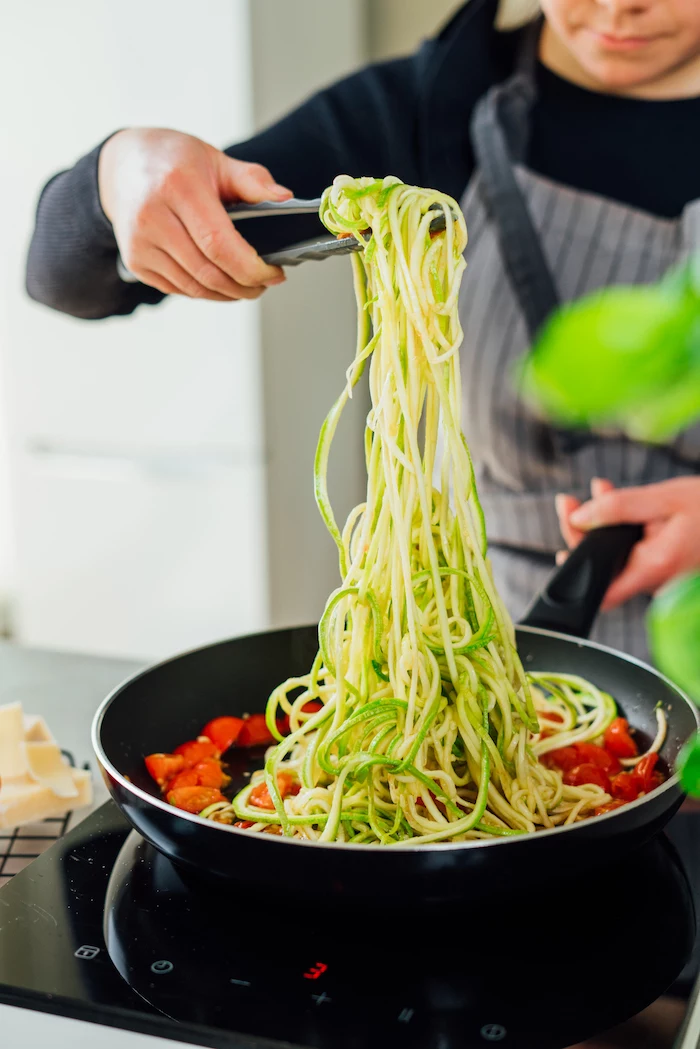
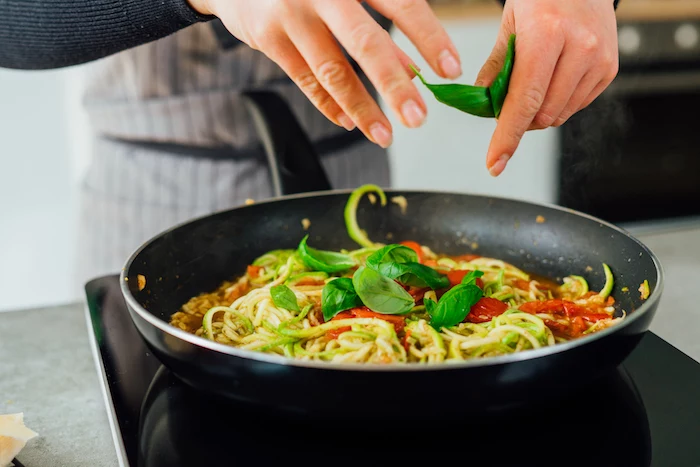
- A crisp, vibrant pesto clings perfectly without adding extra water.
- A rich bolognese or meat sauce offers a hearty contrast to the light zoodles.
- Simple garlic, chili flakes, and high-quality olive oil let the zucchini’s flavor shine.
- A creamy avocado or cashew-based sauce provides richness without dairy.
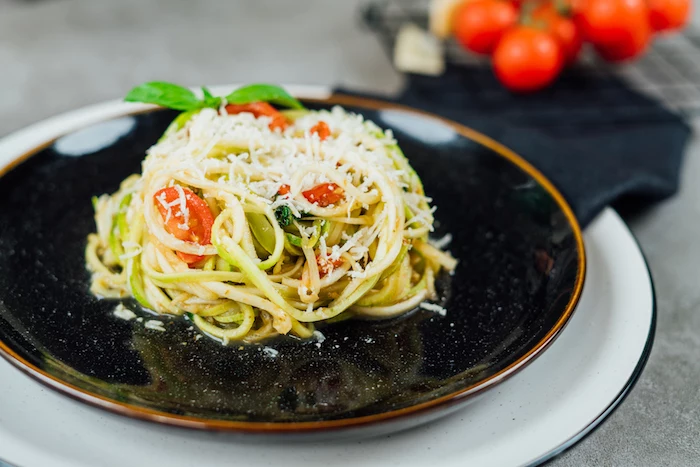
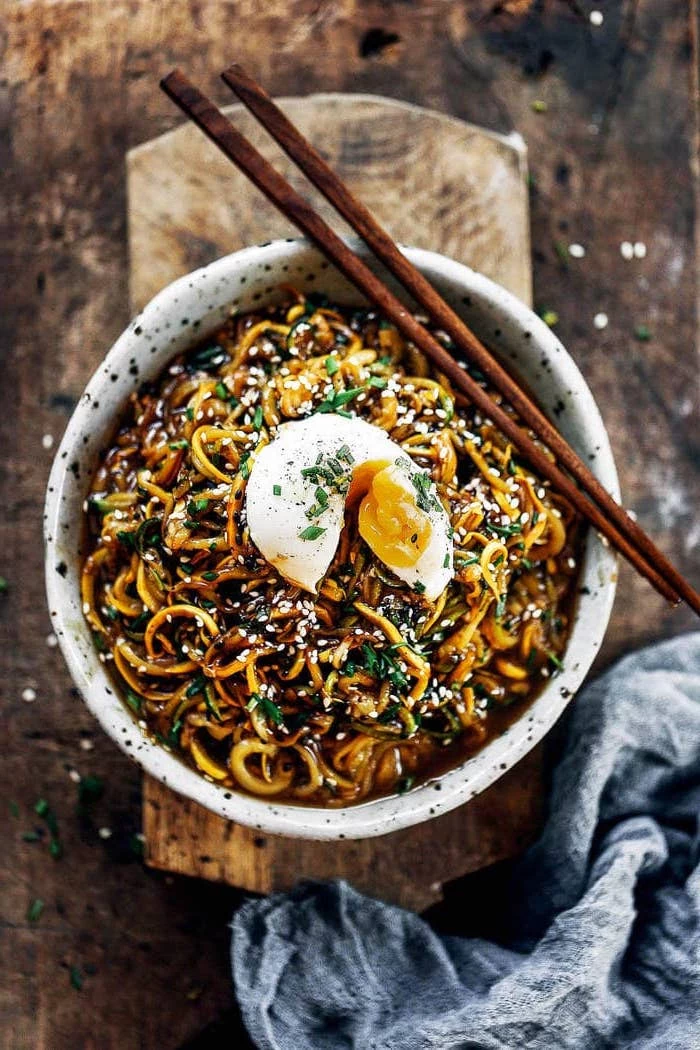
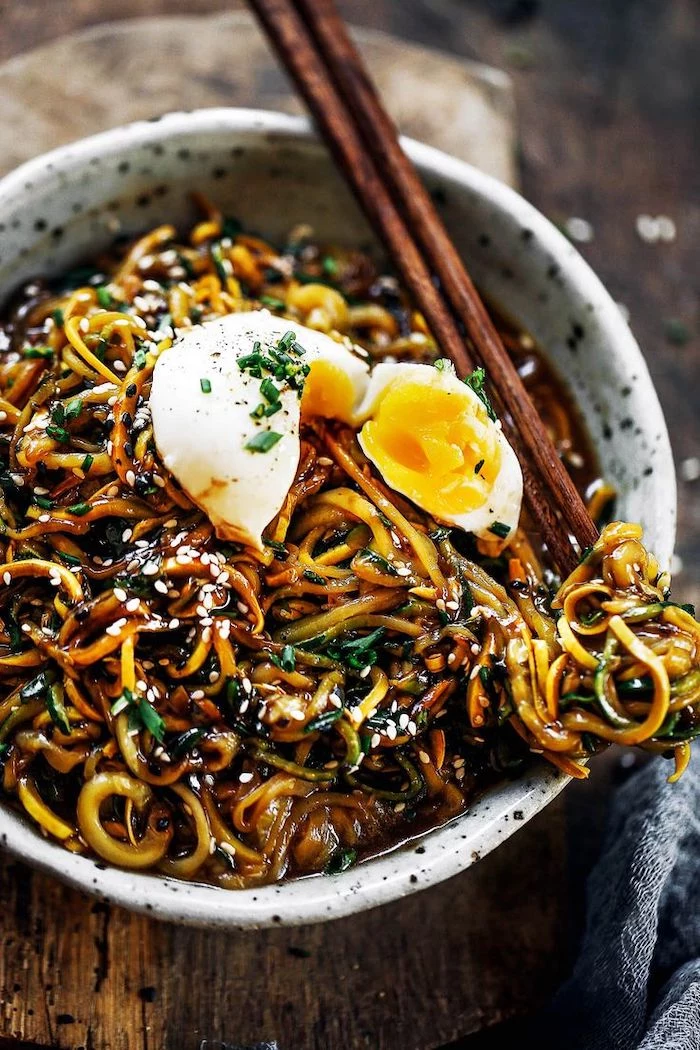
The Golden Rule: Zoodles are not pasta. They don’t need to be boiled or cooked for long. A mere 1-2 minutes in a hot pan is often enough to warm them through while keeping a desirable al dente texture. Any longer, and you’re heading straight for that dreaded watery mess.

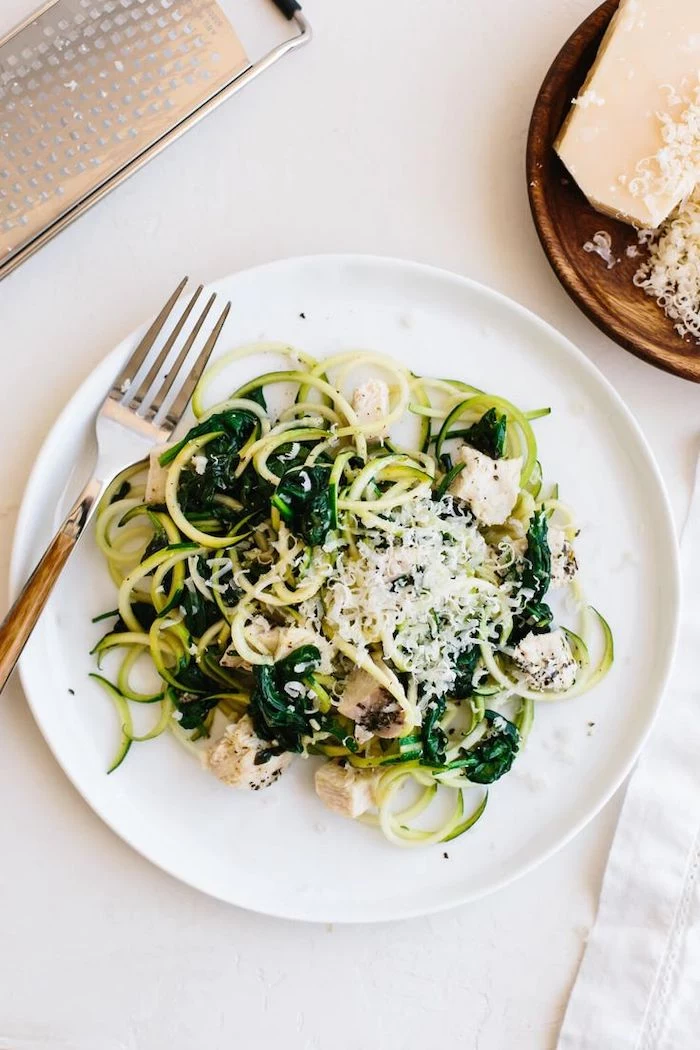
Zucchini is technically a fruit—a type of botanical berry called a ‘pepo’—which explains its naturally high water content and subtly sweet flavor profile when fresh.
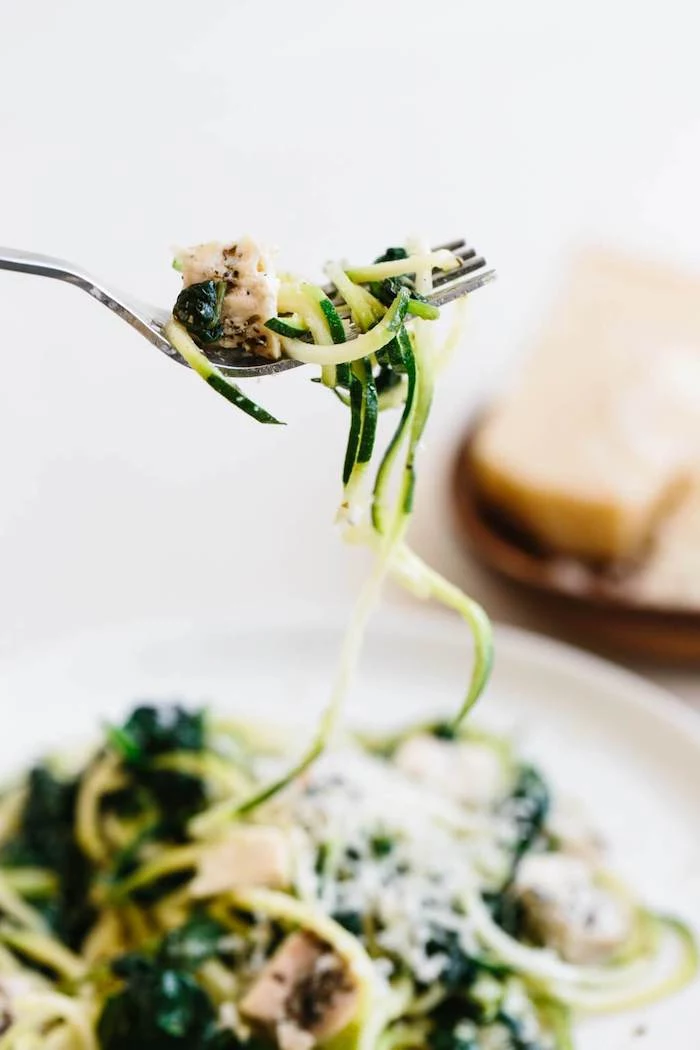
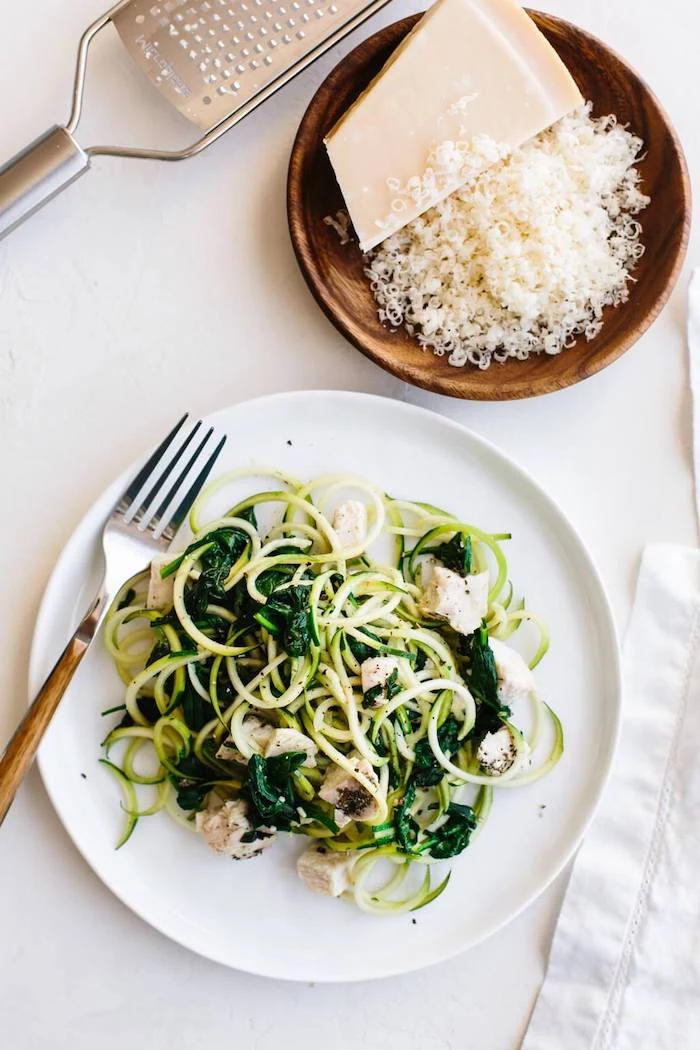
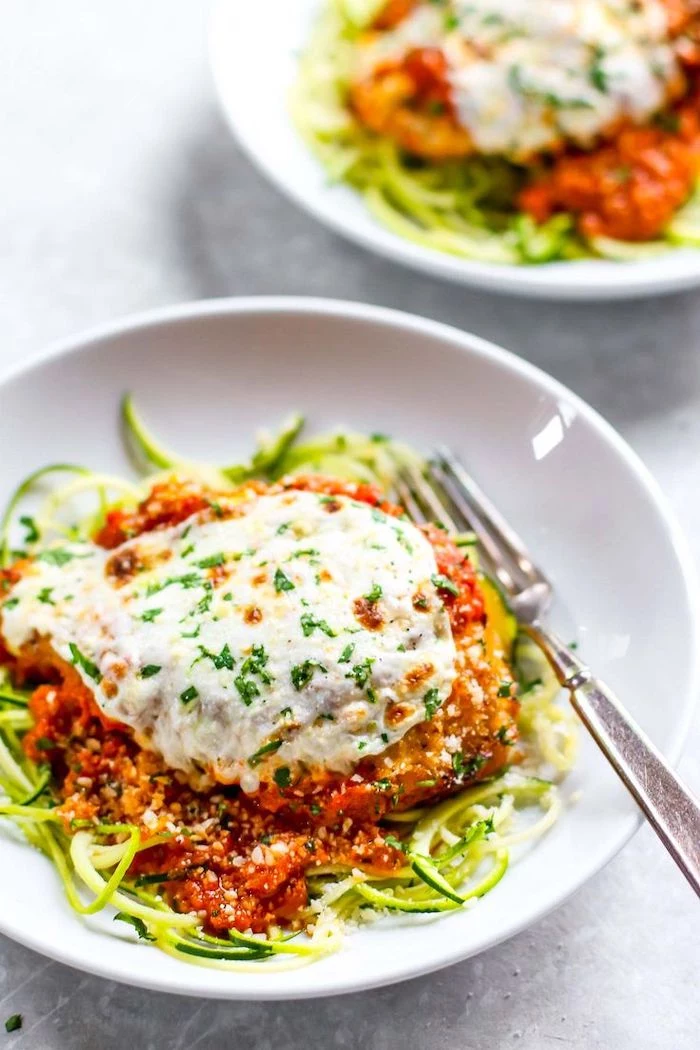
Beyond the classic green zucchini, why not add a splash of color and a twist of flavor to your noodle bowl?
- Yellow Summer Squash: Slightly sweeter and with a more delicate skin, it creates tender, beautifully colored noodles.
- Carrots: Their firmness yields a satisfyingly crunchy noodle, perfect for Asian-inspired salads. A heavy-duty spiralizer is a must here.
- Daikon Radish: Offers a peppery, crisp alternative that’s fantastic served raw with a sesame-ginger dressing.
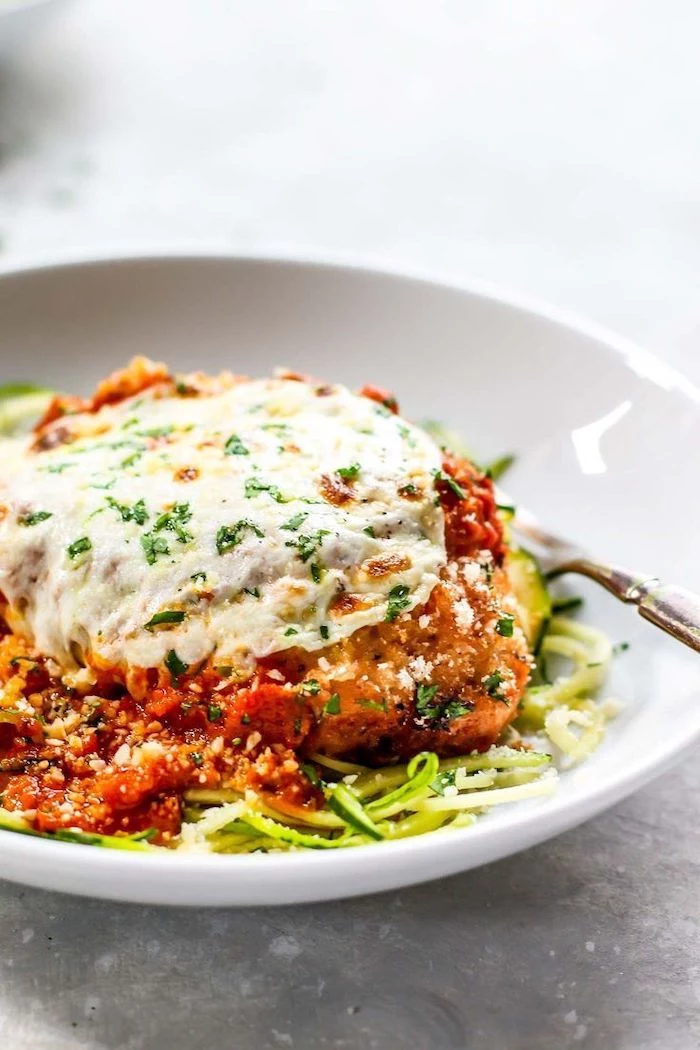
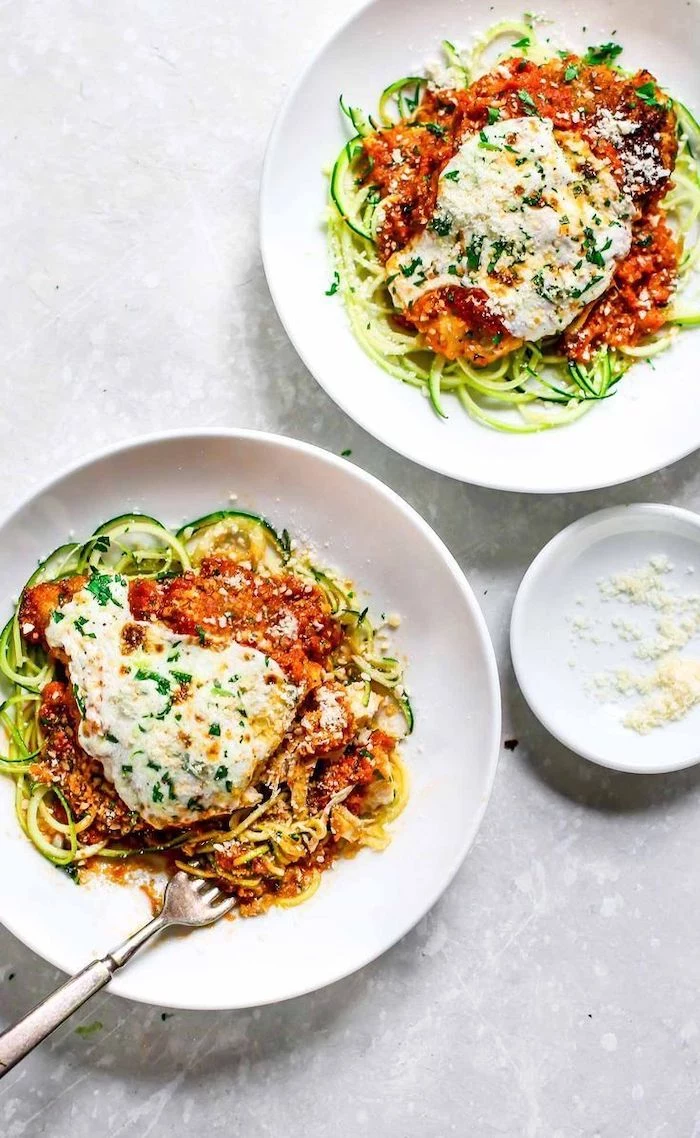
What about the core left over from the spiralizer?
Don’t throw it away! That zucchini core is perfectly good. Chop it up finely and toss it into your sauce as it simmers to add extra vegetable goodness. You can also dice it for soups, stir-fries, or even grate it into frittatas or savory muffins. It’s a simple way to reduce food waste and pack more nutrients into your meals.
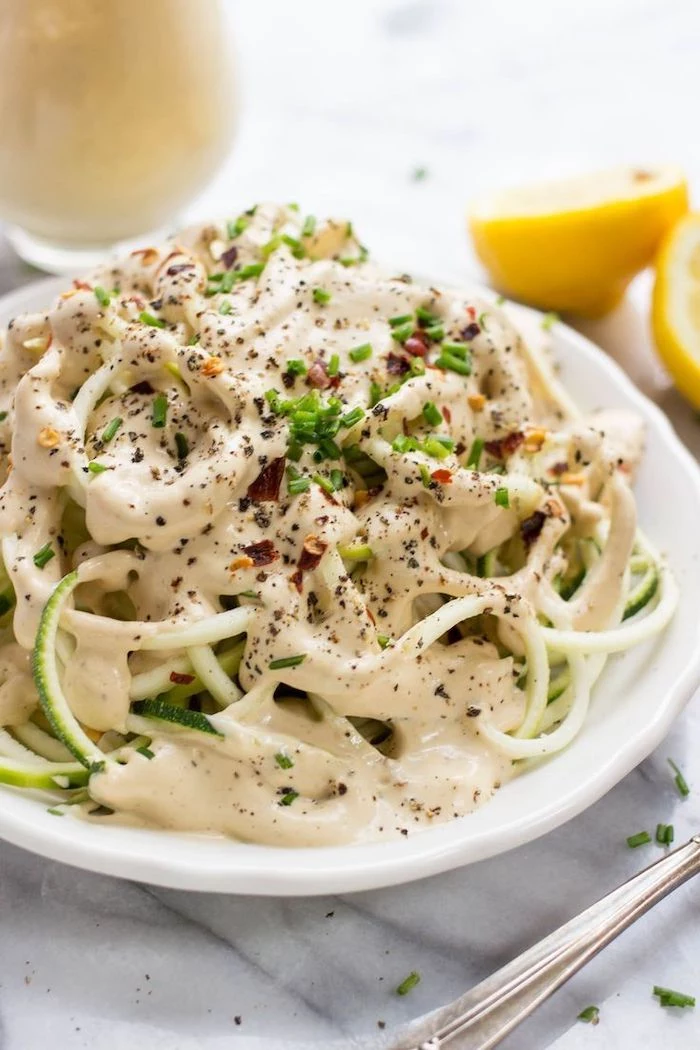
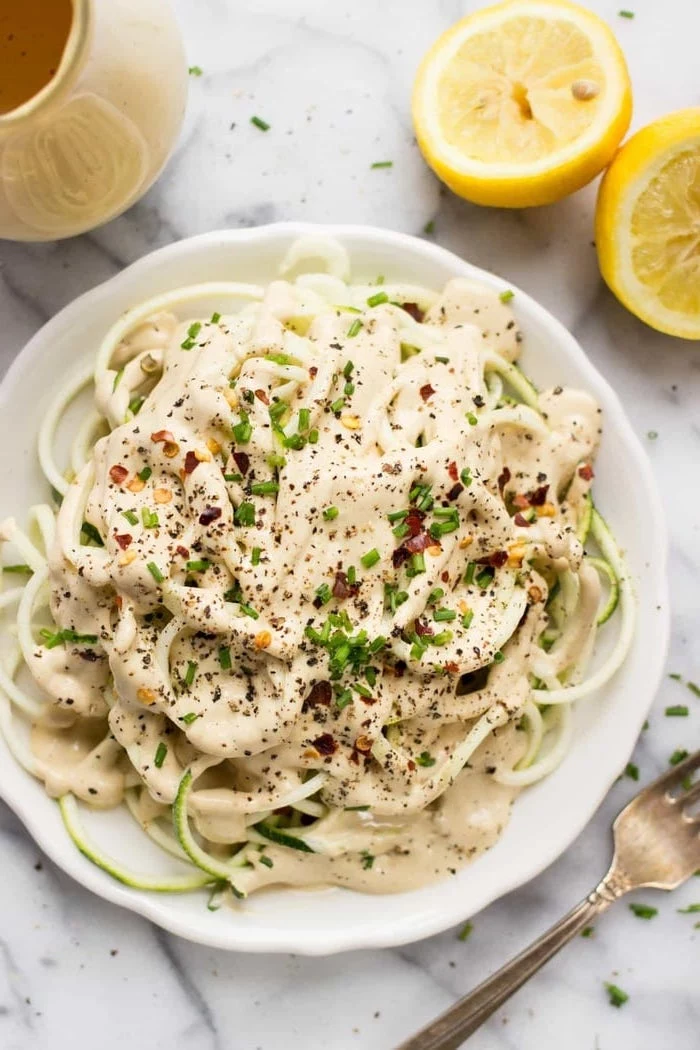
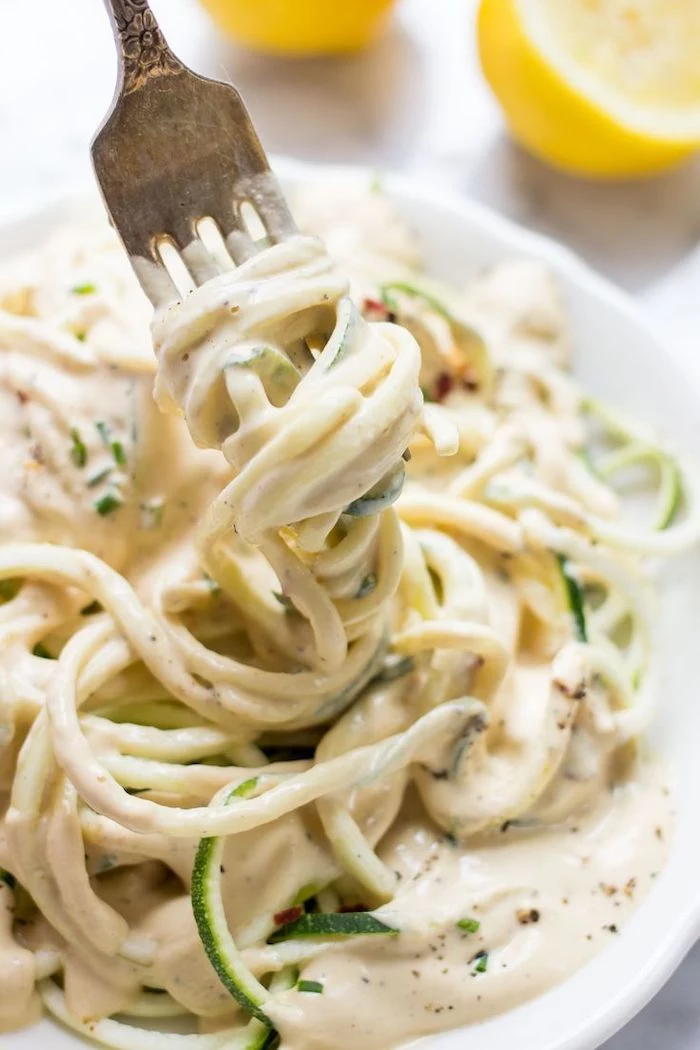
Many home cooks get stuck on one tool, but you have options for creating noodle-like strands.
Spiralizer: The undisputed champion for long, curly, uniform noodles. Essential for achieving that classic ‘spaghetti’ look.
Julienne Peeler: A fantastic, inexpensive alternative. It creates shorter, flatter ‘fettuccine’ style strands. Perfect for salads or as a garnish. It requires more manual effort but is a great entry point.
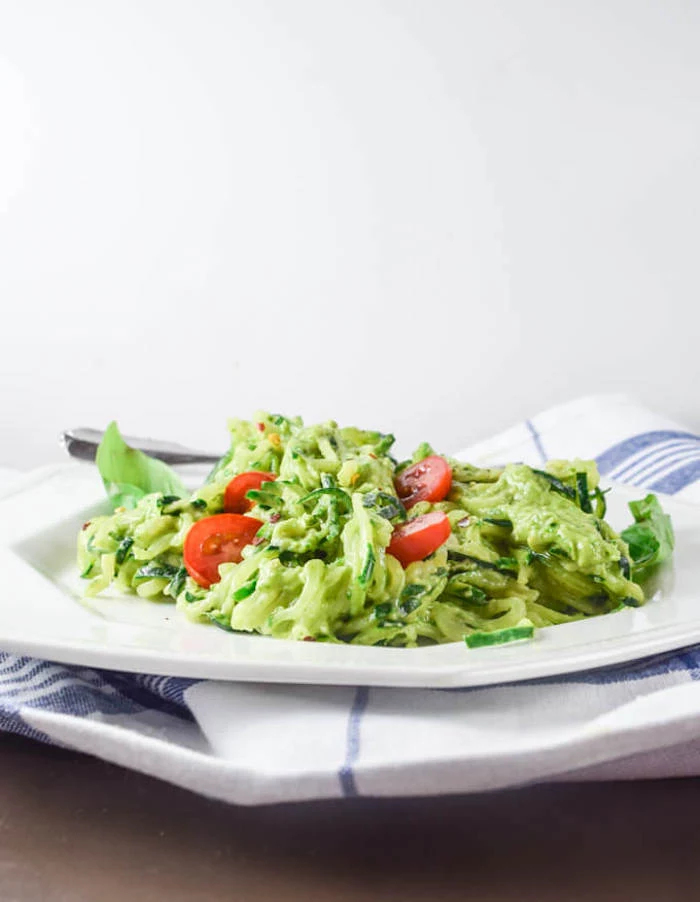
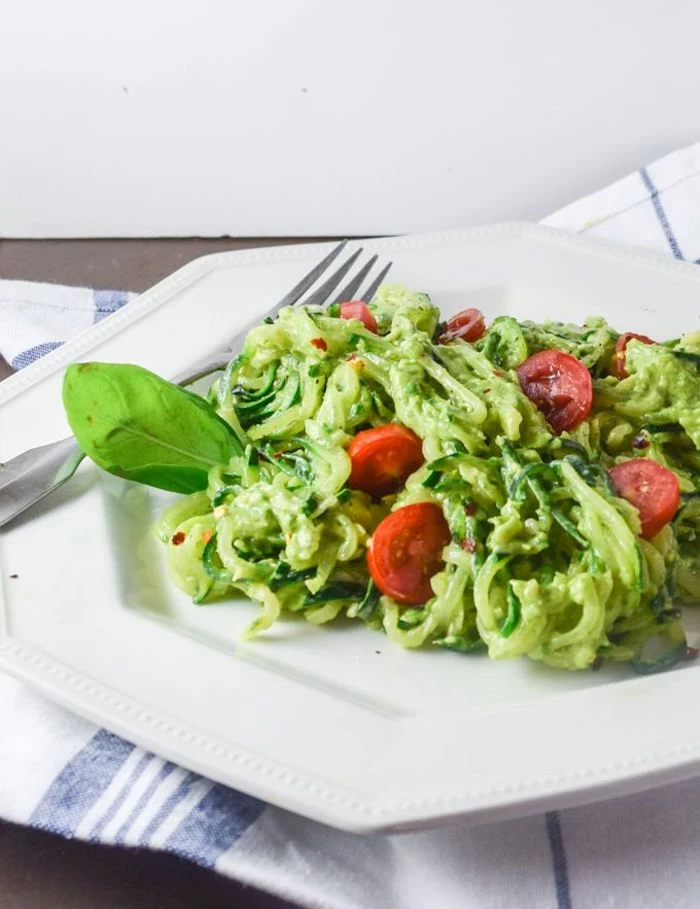
A single medium zucchini contains over 50% of your daily recommended intake of Vitamin C.
This means that beyond being a low-carb alternative, zoodles are a genuine boost to your immune system. However, Vitamin C is heat-sensitive, which is another great reason to cook your zoodles minimally—just a quick sauté preserves more of this essential nutrient.
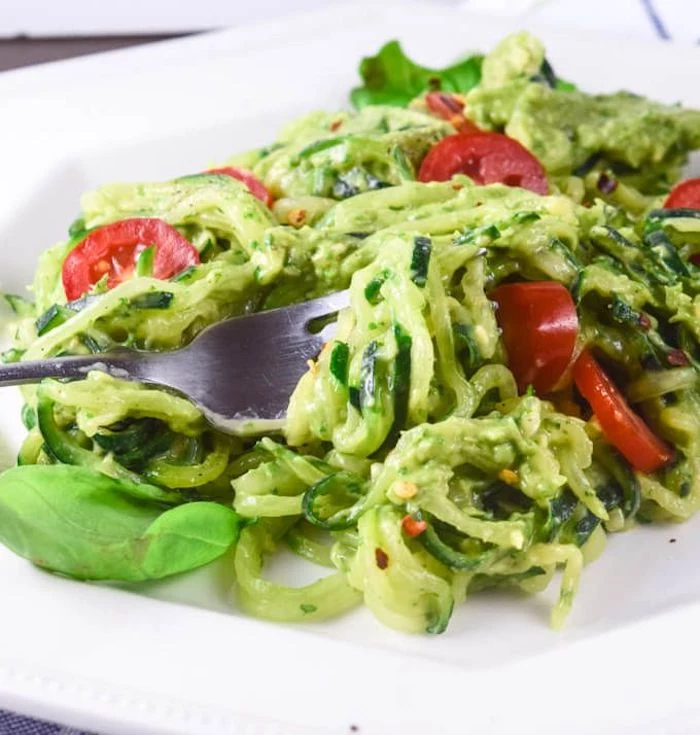
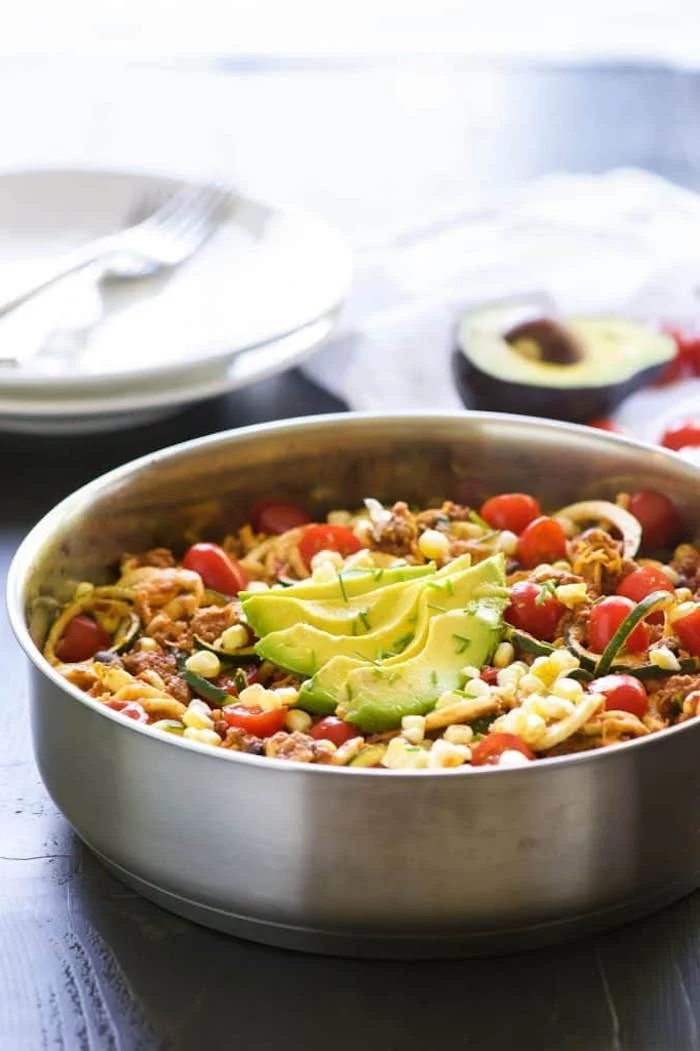

- A satisfying, toothsome bite.
- Beautifully vibrant and green noodles.
- No pooling water at the bottom of your bowl.
The secret? After spiralizing, spread the zoodles on a baking sheet lined with paper towels, sprinkle lightly with salt, and let them ‘sweat’ for 20-30 minutes. Pat them dry before cooking. This pre-salting step draws out a significant amount of moisture before they ever hit the pan.
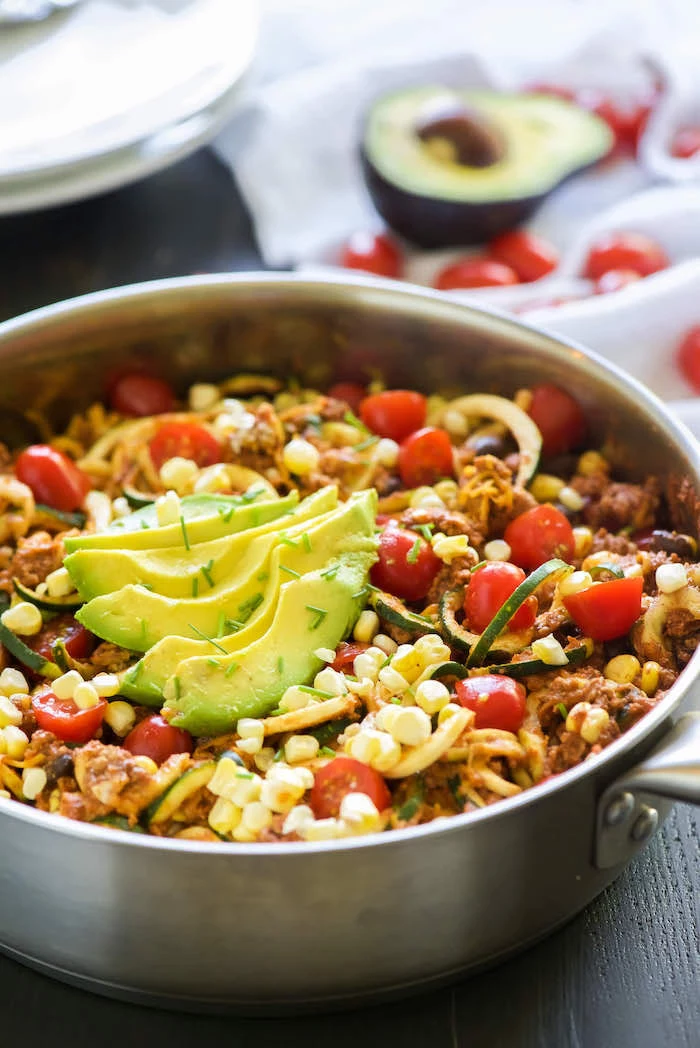
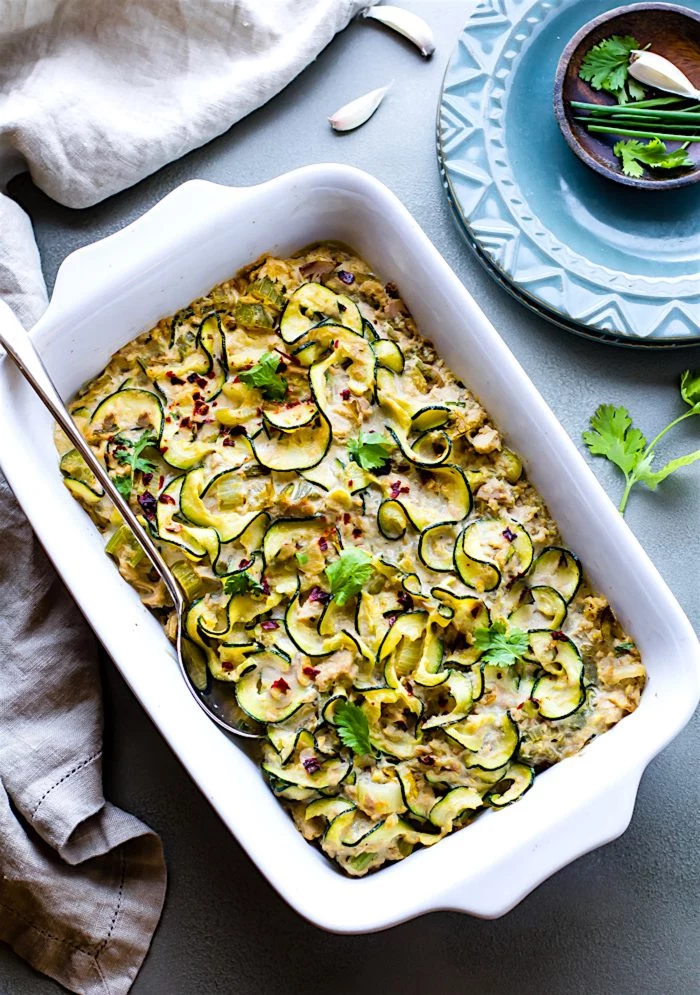
For meal preppers, storing zoodles correctly is key. To prevent them from getting soggy, place a folded paper towel at the bottom of an airtight container. Pile the raw zoodles on top, and place another paper towel over them before sealing the lid. This will absorb excess moisture and can keep them fresh and crisp in the refrigerator for up to 3 days.
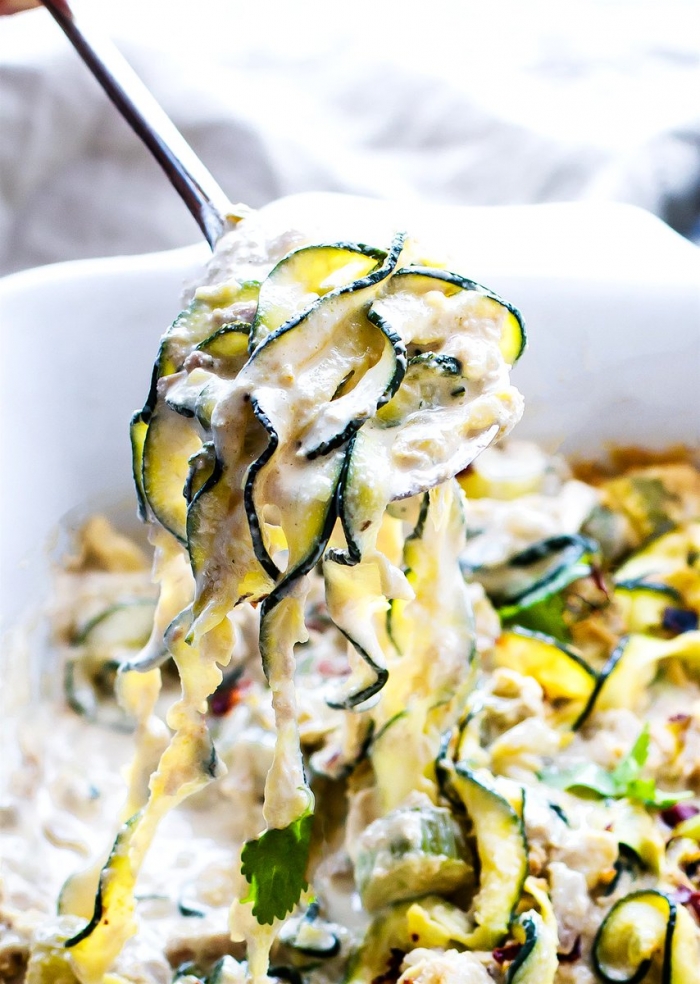
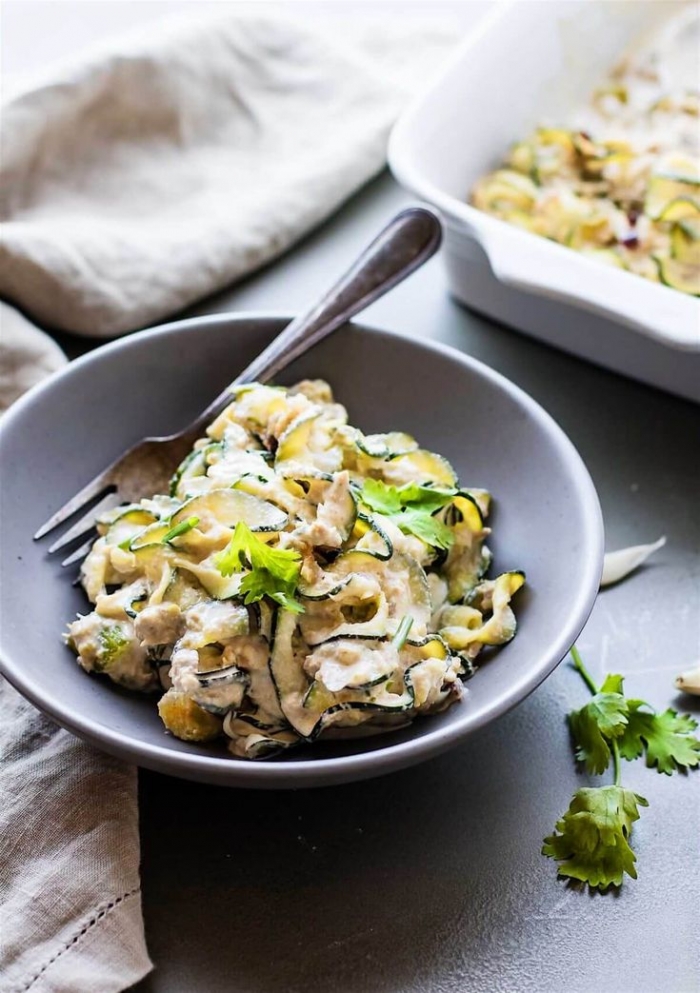
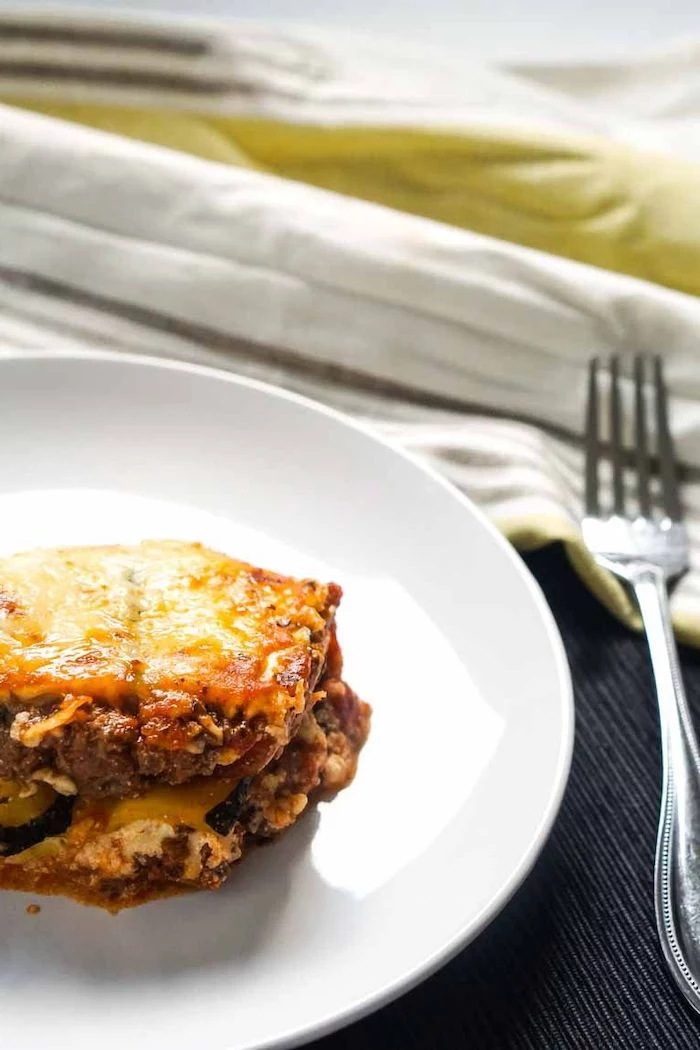
Can you freeze zucchini noodles?
While technically possible, it’s generally not recommended. Zucchini’s high water content means that upon thawing, the cell walls break down, resulting in extremely soft, mushy noodles that have lost their texture. For the best results, always make your zoodles from fresh zucchini. If you must freeze, consider blanching them first, but be prepared for a much softer outcome.
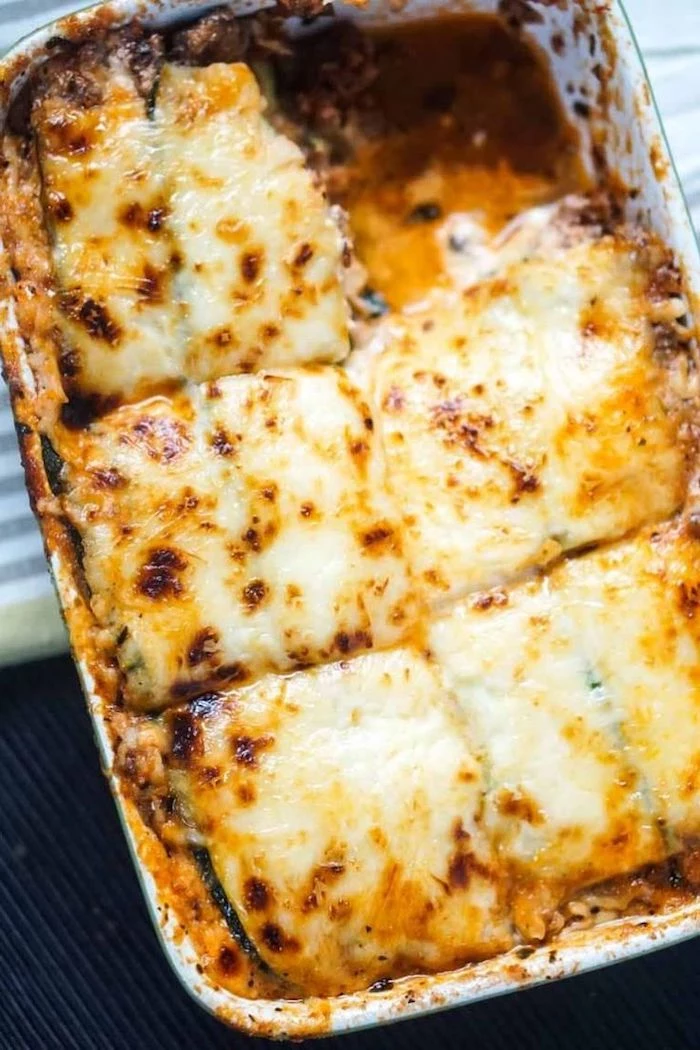
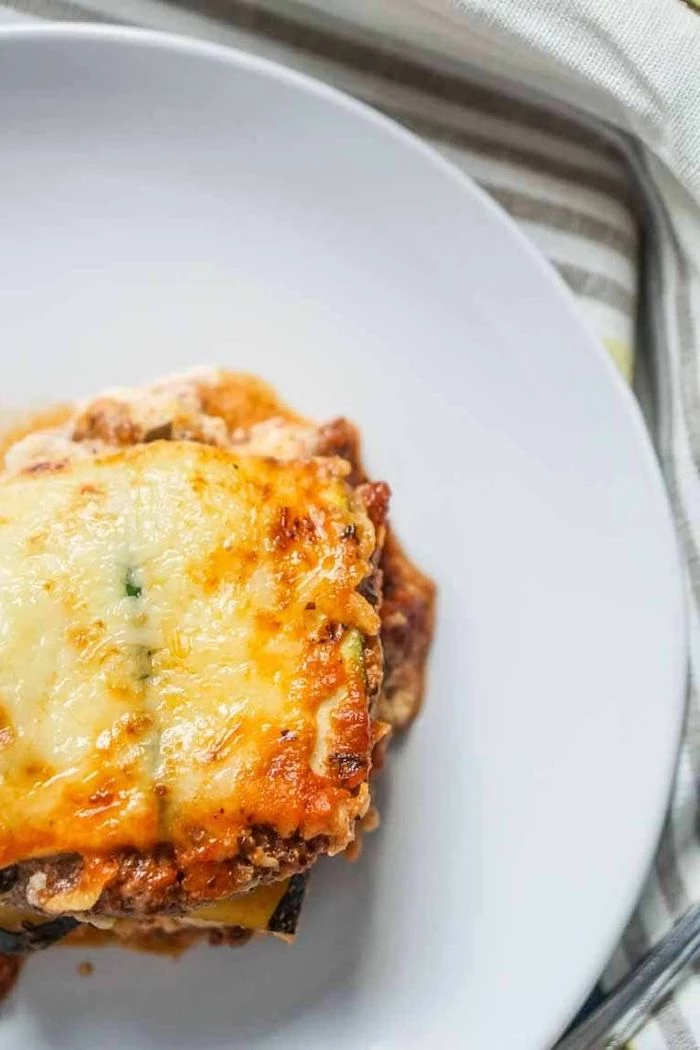
The choice of pan makes a surprising difference. A wide, shallow skillet or sauté pan is ideal. This maximizes the surface area, allowing the zoodles to have direct contact with the hot surface. This encourages quick evaporation of any released moisture rather than steaming, which leads to limpness. Avoid overcrowding a small pot.
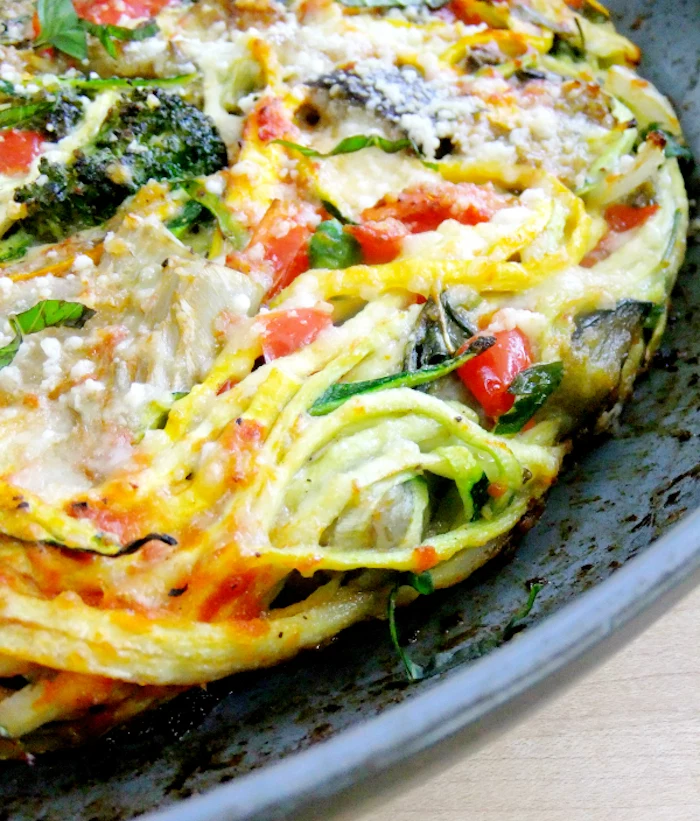
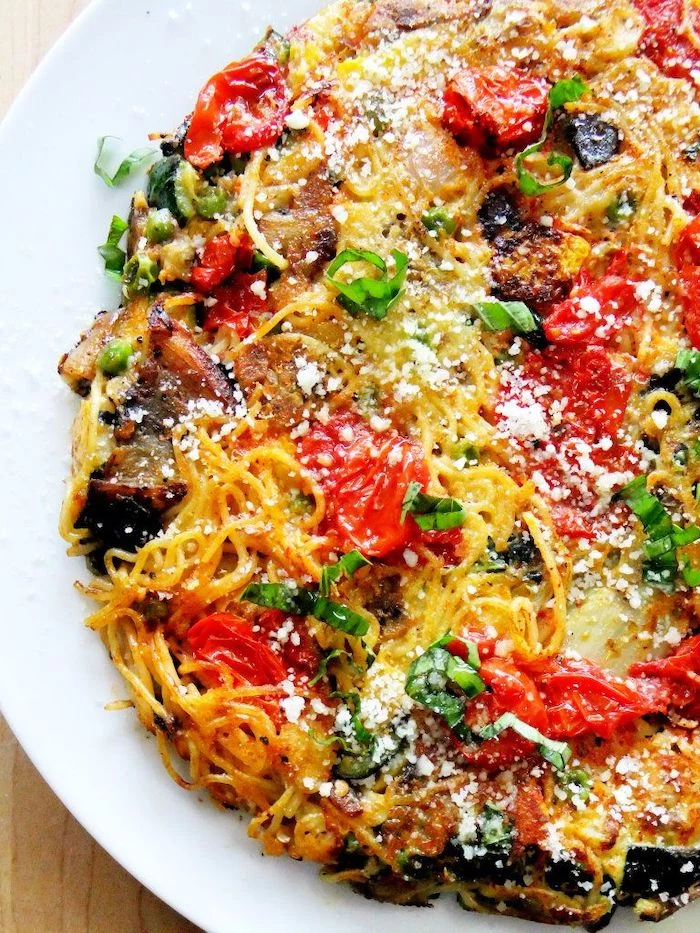
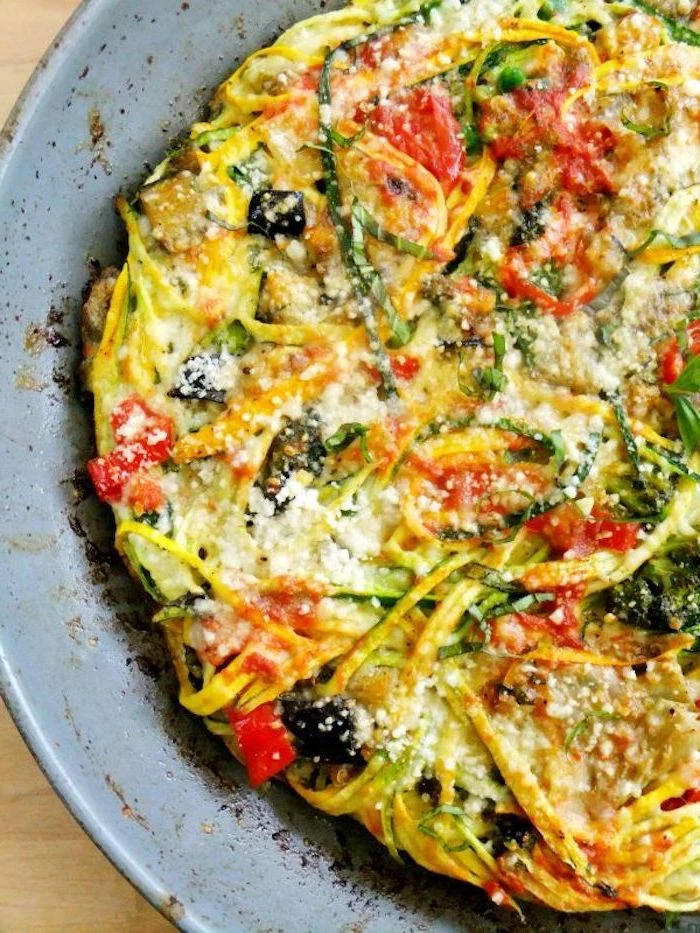
While beloved in Italy today, zucchini (and all squash) originated in the Americas and was only introduced to European kitchens in the 16th century after Columbus’s voyages.
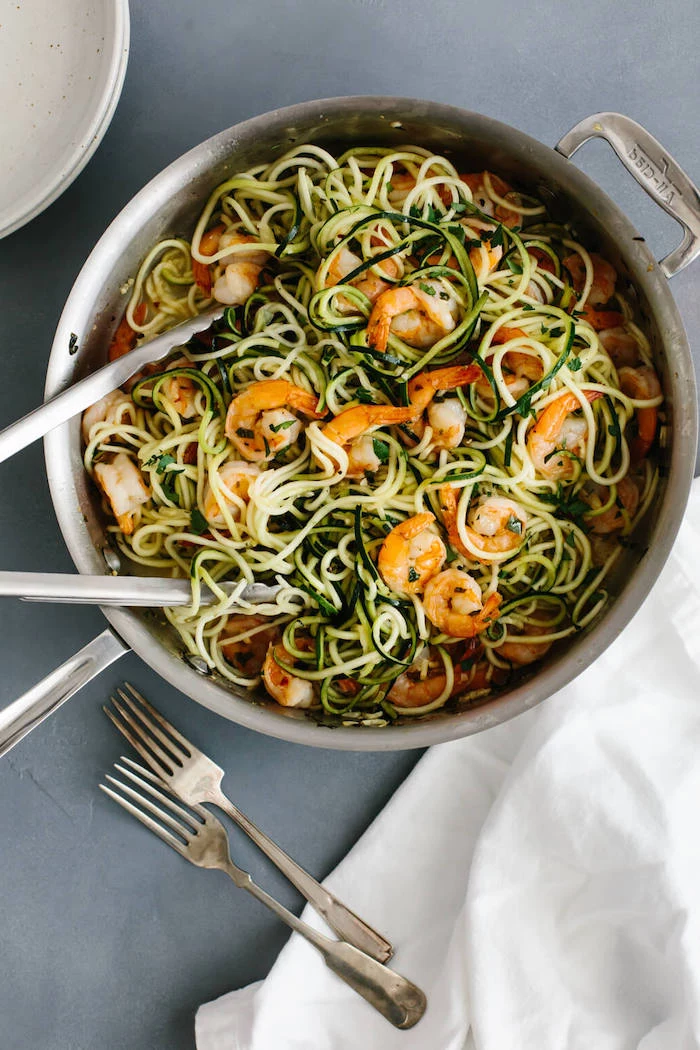

Think creamy carbonara is off the table? Think again. The trick is to manage the heat perfectly.
- Sauté your pancetta until crisp, then remove from the pan.
- Briefly cook the zoodles in the rendered fat for 1-2 minutes.
- CRUCIALLY, take the pan completely off the heat. Wait 30 seconds, then stir in your egg and parmesan mixture. The residual heat will cook the egg gently without scrambling it.
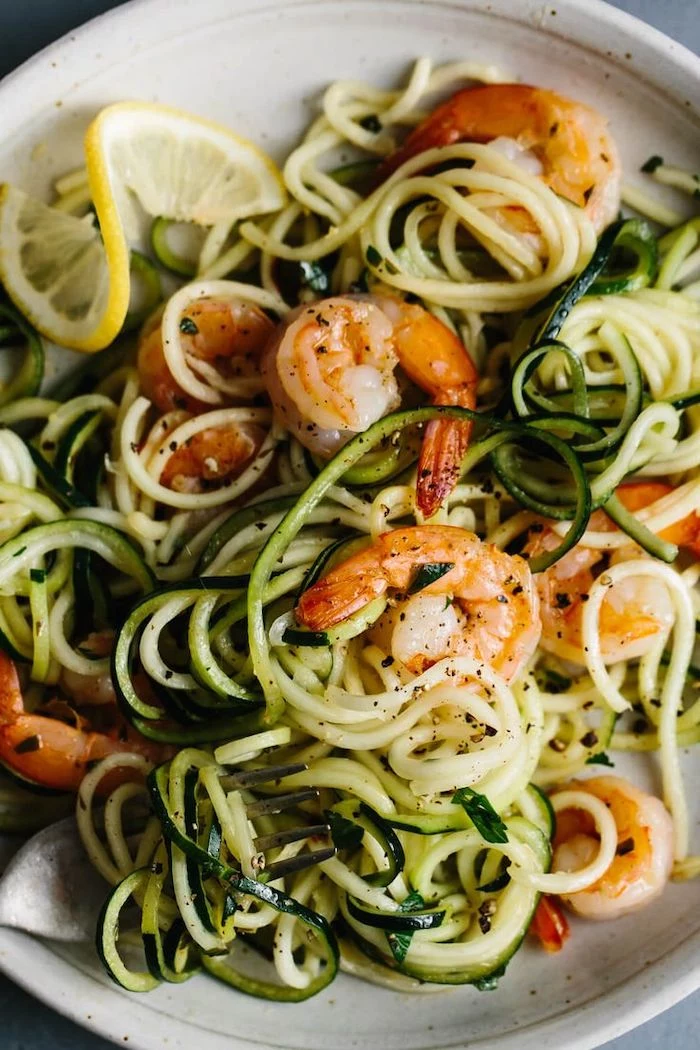
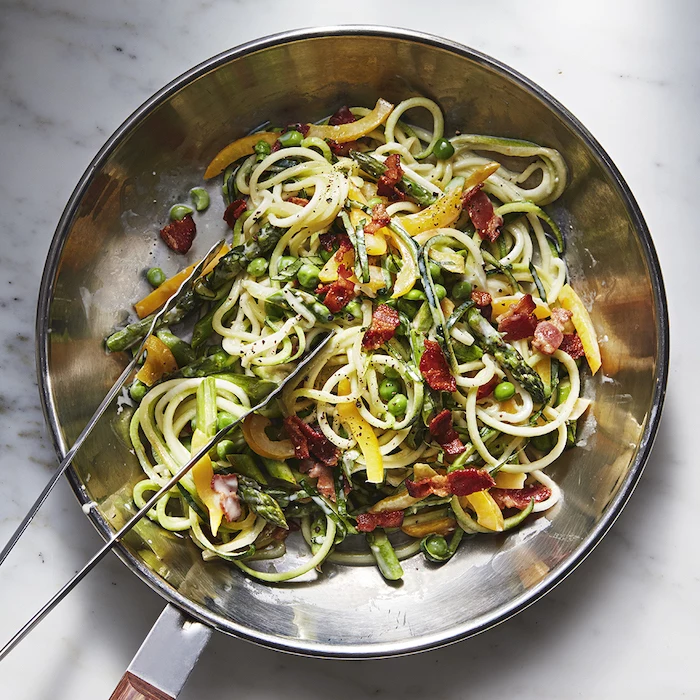
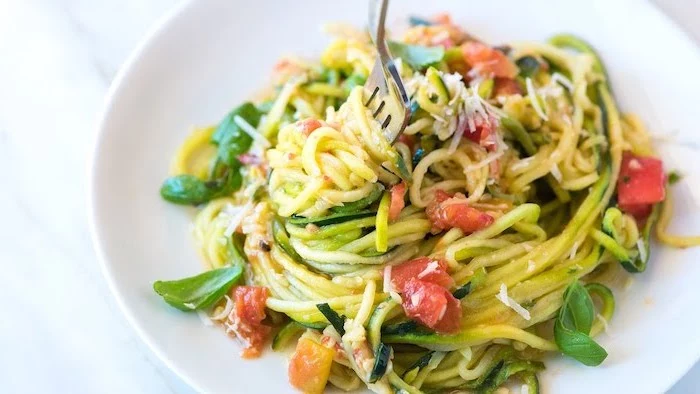
A Quick Blanch: Drop spiralized noodles into boiling water for just 30-45 seconds, then immediately plunge them into an ice bath to stop the cooking. This ‘blanching’ technique sets their color and gives them a tender-crisp texture that’s perfect for noodle salads or being gently reheated in a sauce.
A Brief Sauté: Tossing them in a hot, lightly oiled pan for 1-3 minutes. This method cooks the noodles while evaporating moisture, ideal for hot dishes. The key is high heat and constant motion.
For salads, blanching wins. For hot pasta-like dishes, sautéing is superior.

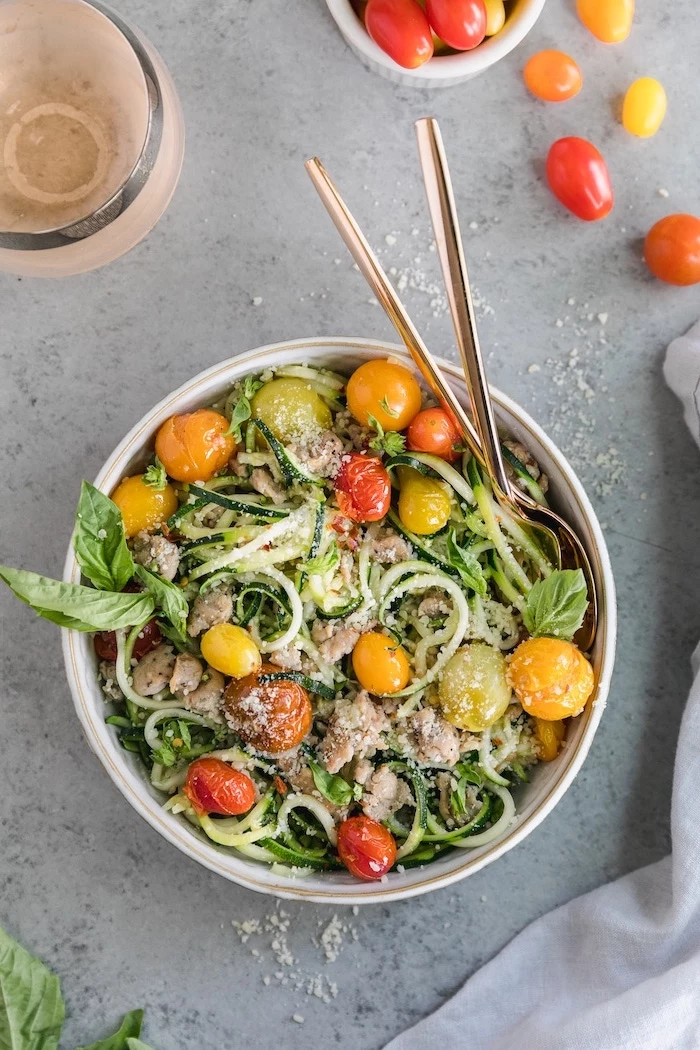
- Perfectly coats every strand.
- Adds umami and depth.
- Doesn’t require any cooking.
The secret? A simple, no-cook Asian-style dressing. Whisk together 2 tablespoons of tamari or soy sauce, 1 tablespoon of rice vinegar, 1 teaspoon of sesame oil, and a pinch of red pepper flakes. Pour over raw or blanched zoodles and top with sesame seeds for an instant, flavorful meal.
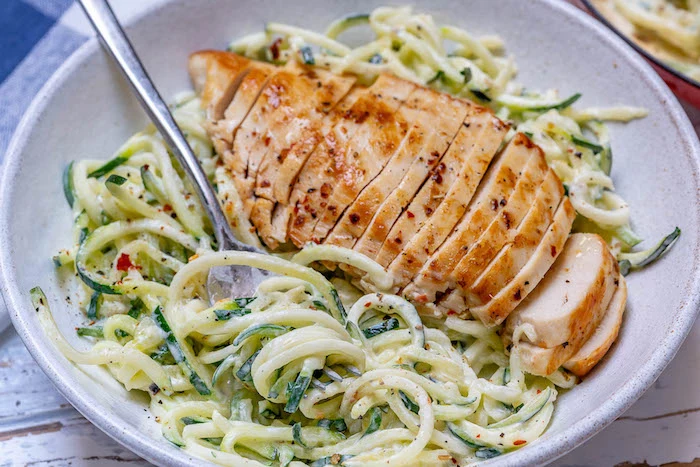
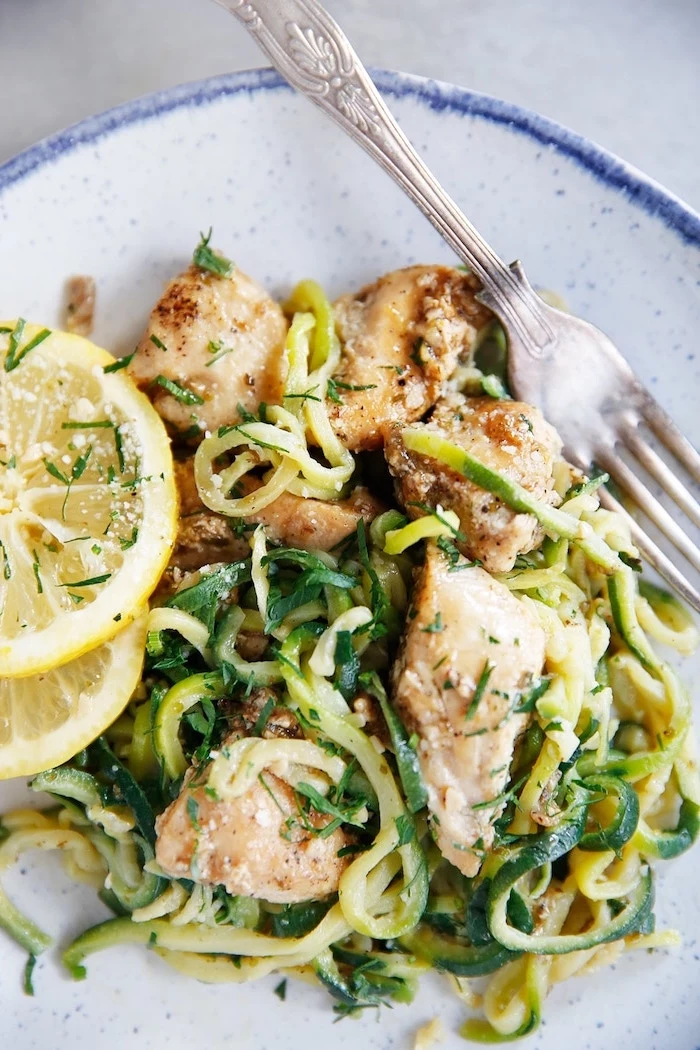
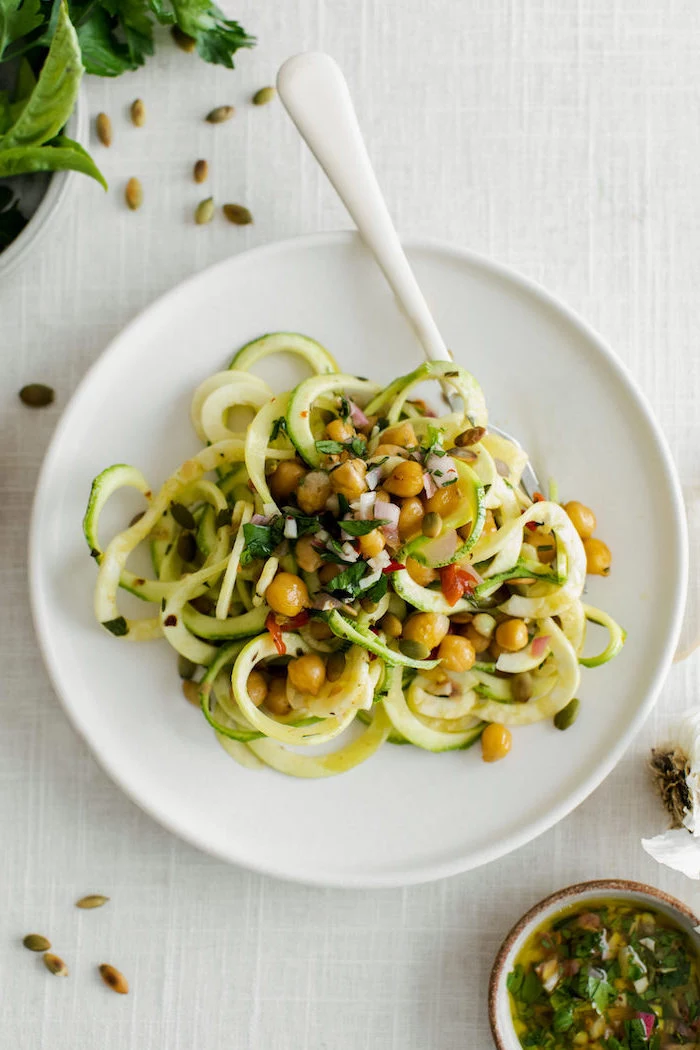
Don’t just think Italian. The neutral flavor of zucchini makes it a perfect canvas for global tastes. Try tossing them with a Thai peanut sauce and cilantro, a Greek-inspired mix of feta, olives, and lemon, or even a spicy Indian curry sauce. Their versatility is their greatest strength.
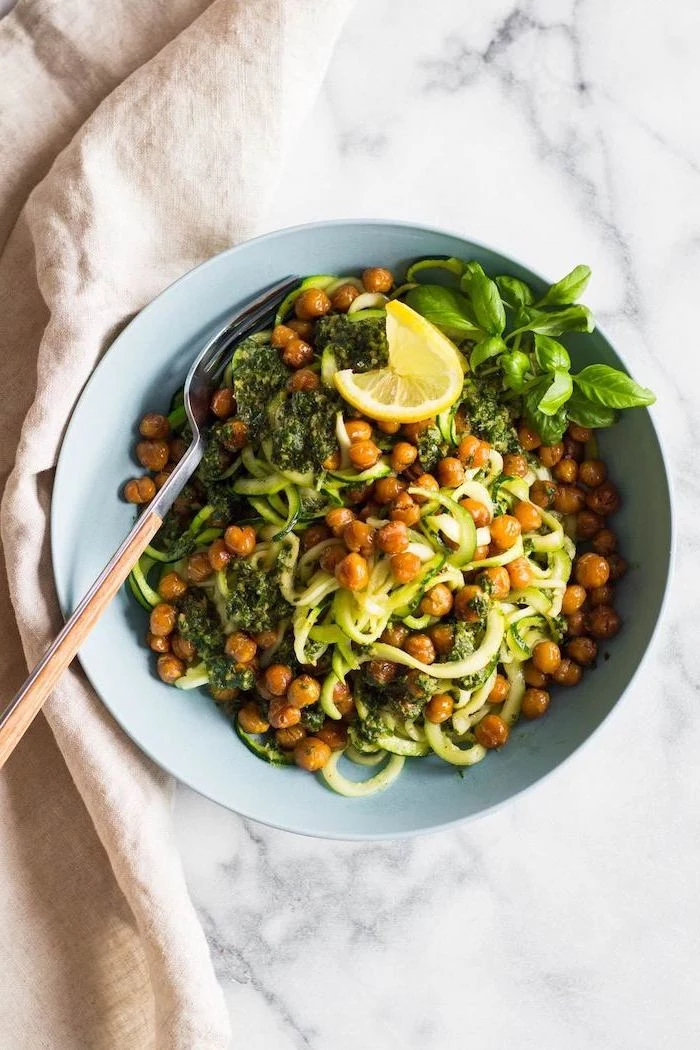
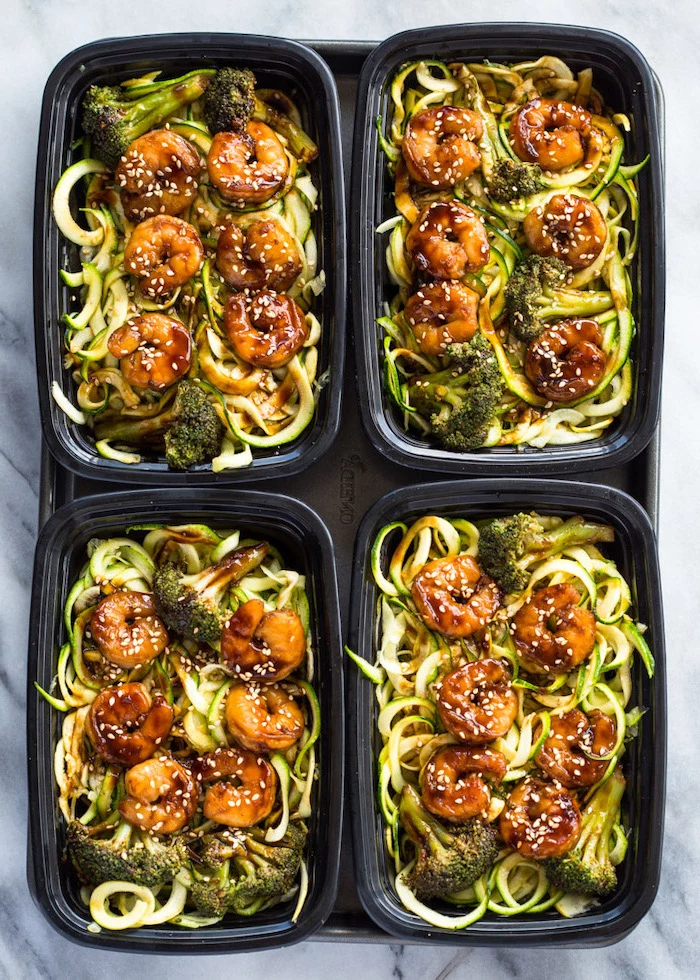
Important detail: The type of salt you use for the pre-salting process matters. A fine-grain salt, like standard table salt or fine sea salt, is best. Its small crystals dissolve quickly and cover more surface area, making it more efficient at drawing out water than coarse kosher or flaky sea salt.
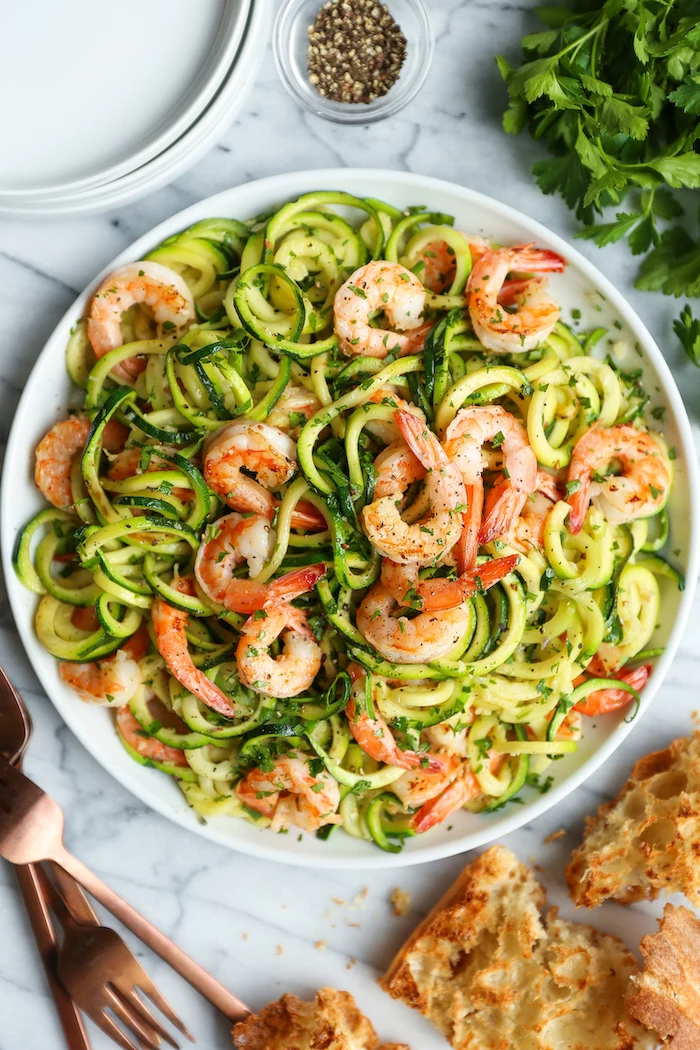
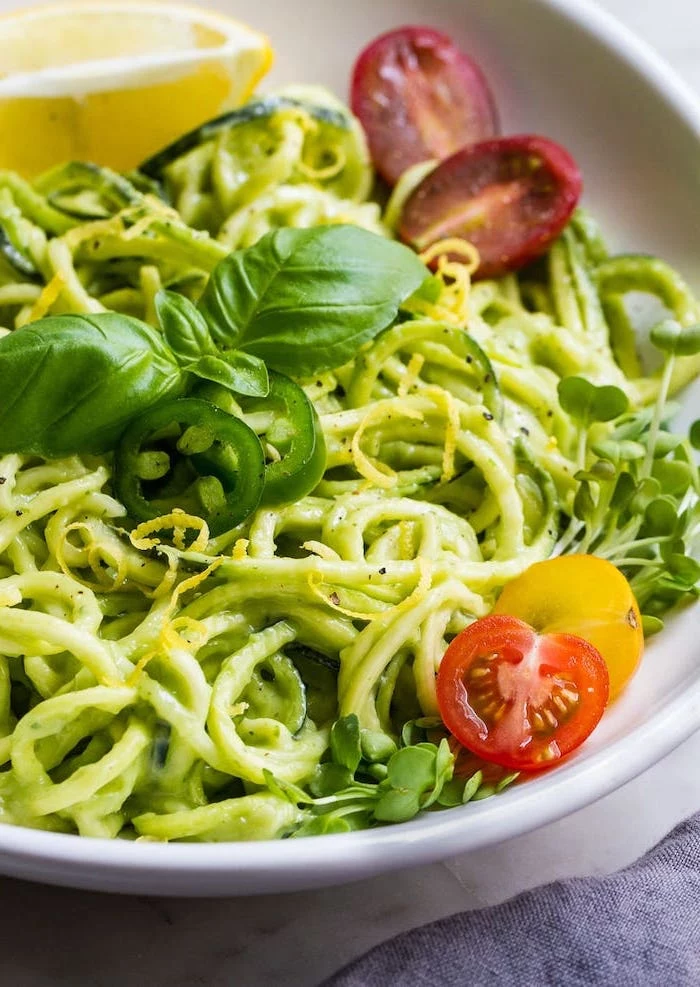
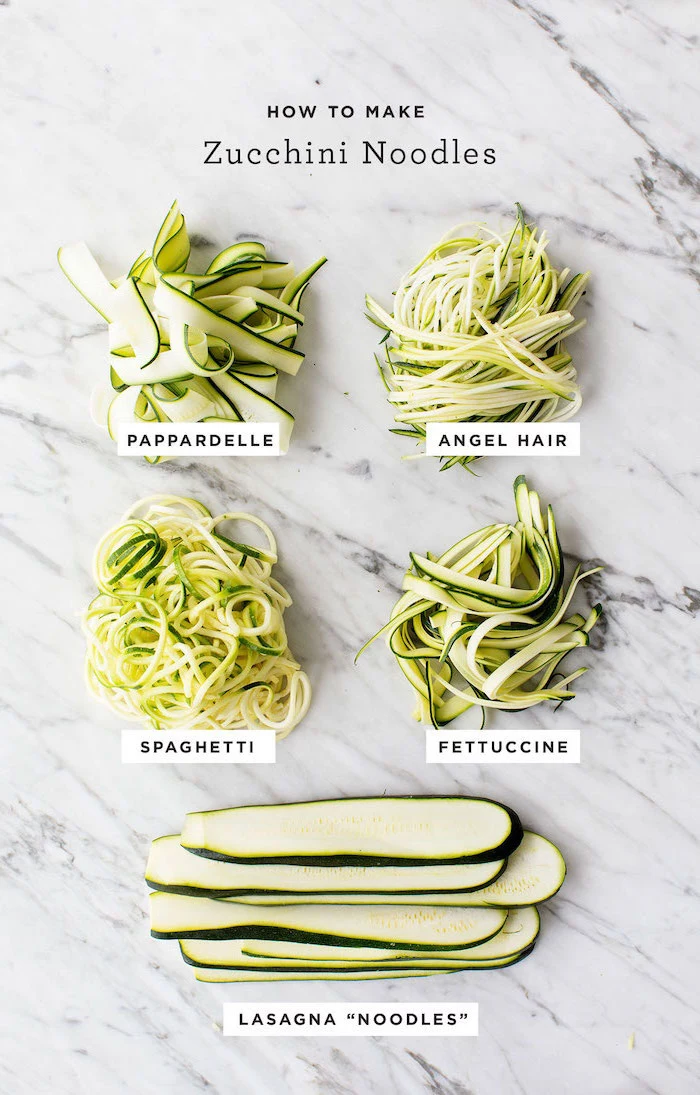
“I want to know my food. I want to know where it’s been. I want to know its story.” – Yotam Ottolenghi
This sentiment is perfect for zucchini. By understanding its watery nature and choosing the freshest, firmest specimens from a local market, you’re already halfway to a successful dish. You’re not just cooking; you’re engaging with the ingredient’s inherent character.
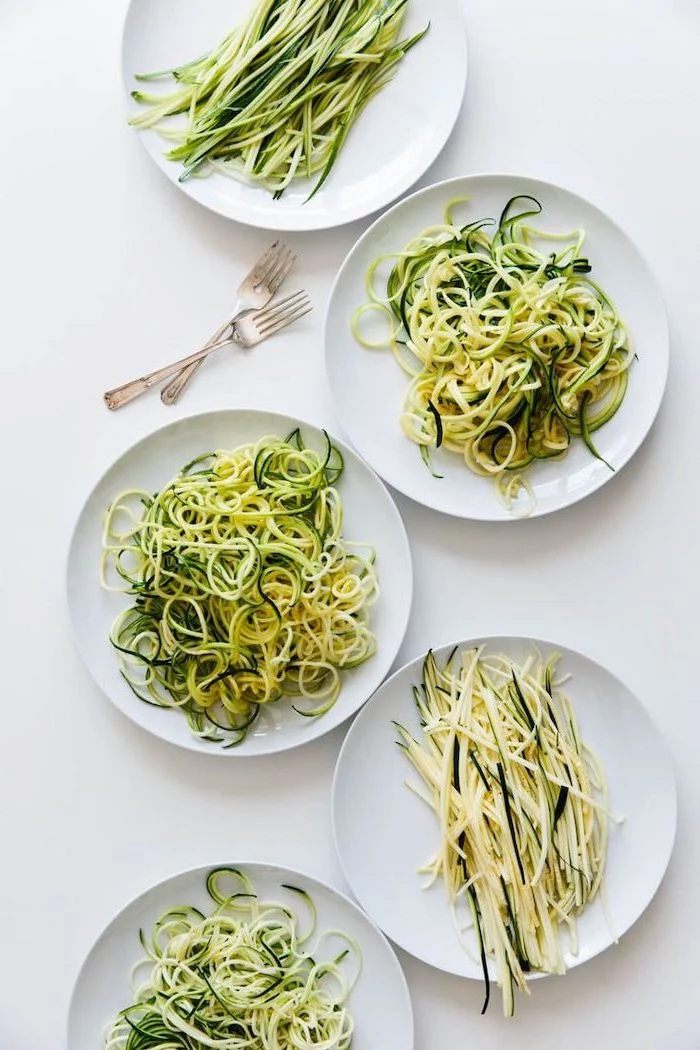
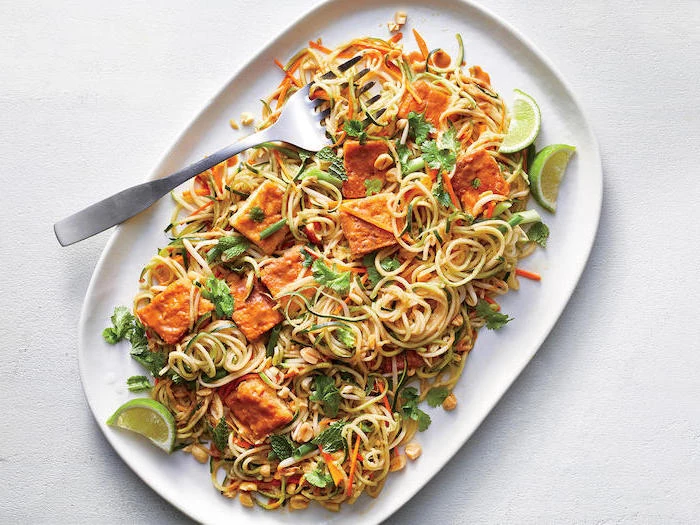
Pairing zoodles with the right protein turns a light side into a complete meal. For a quick weeknight dinner, toss them with pre-cooked shrimp or shredded rotisserie chicken in the last minute of cooking. For a more elegant meal, serve them alongside a perfectly seared salmon fillet or grilled steak, letting the zoodles act as a fresh, vibrant bed for the rich protein.
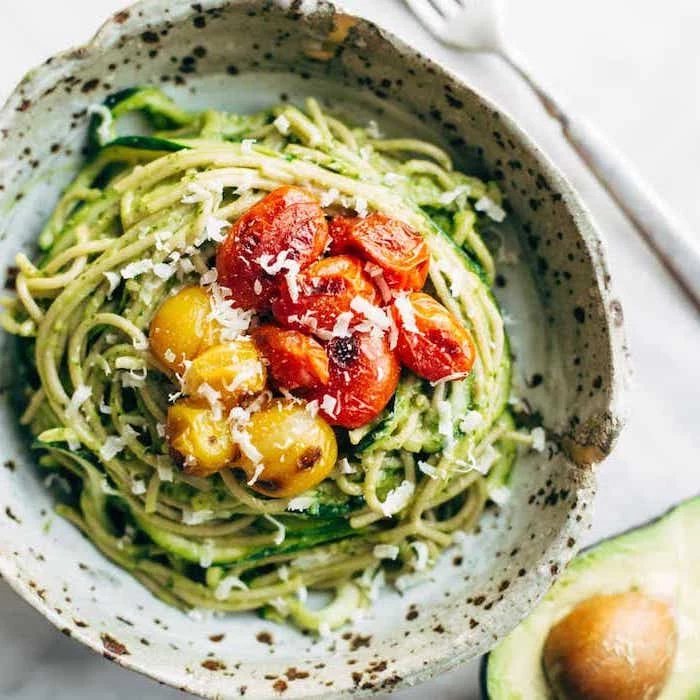
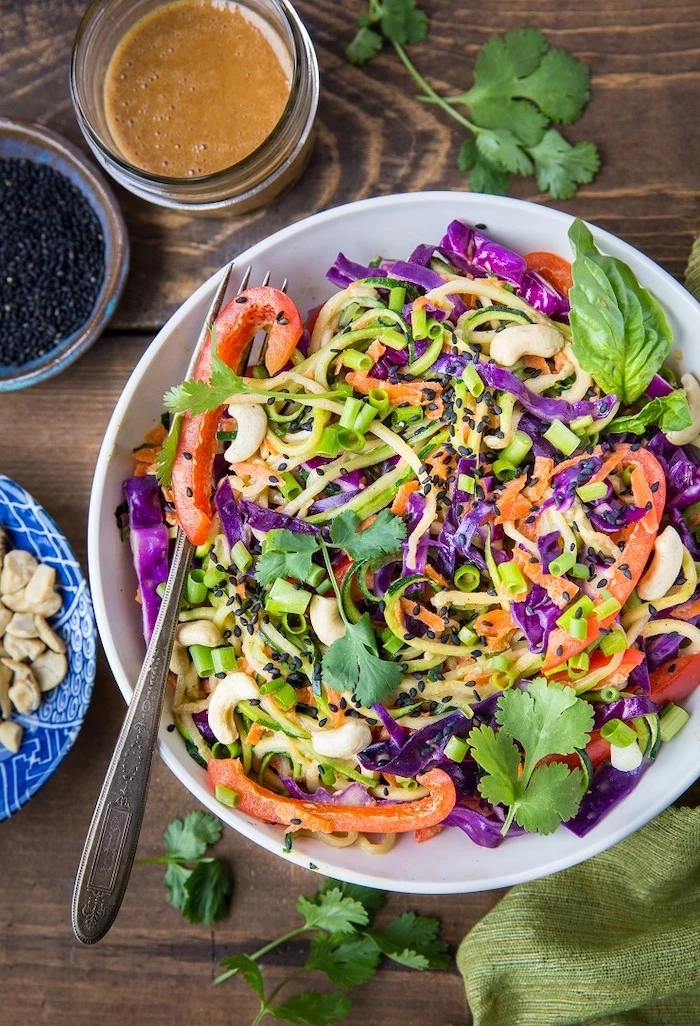
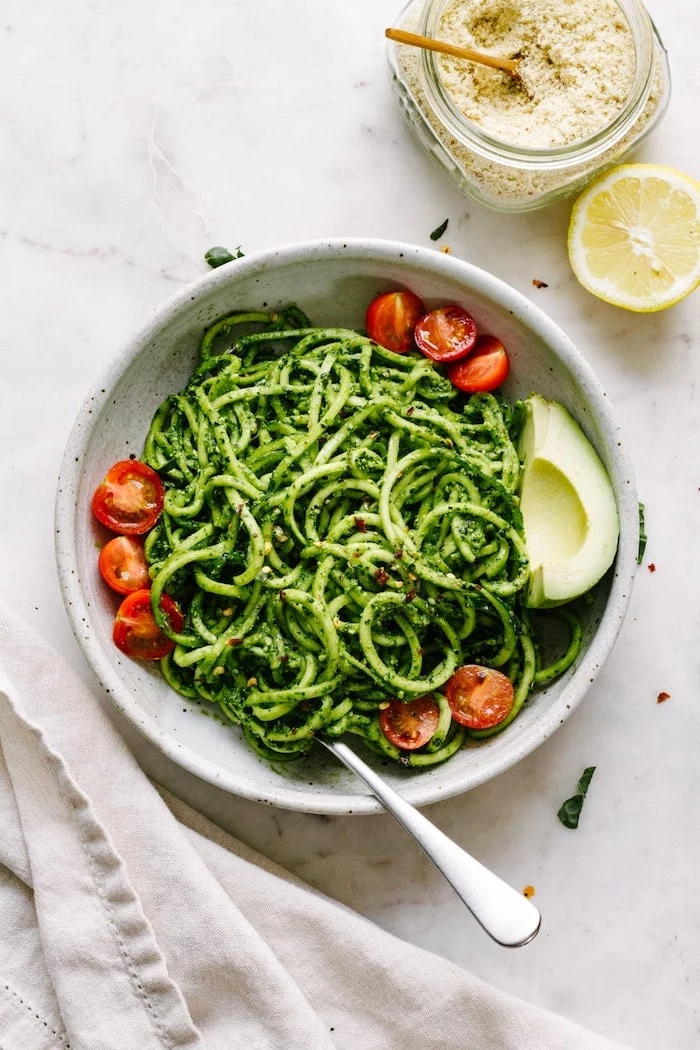
- Adding a watery sauce: A thin marinara will only compound the problem. Opt for thicker sauces, pesto, or simple oil-based dressings.
- Dumping sauce on top: Instead of pouring sauce over a pile of zoodles, add the zoodles *to the pan with the sauce*. Toss quickly to coat and serve immediately. This ensures every strand is flavored without letting things sit and get soupy.
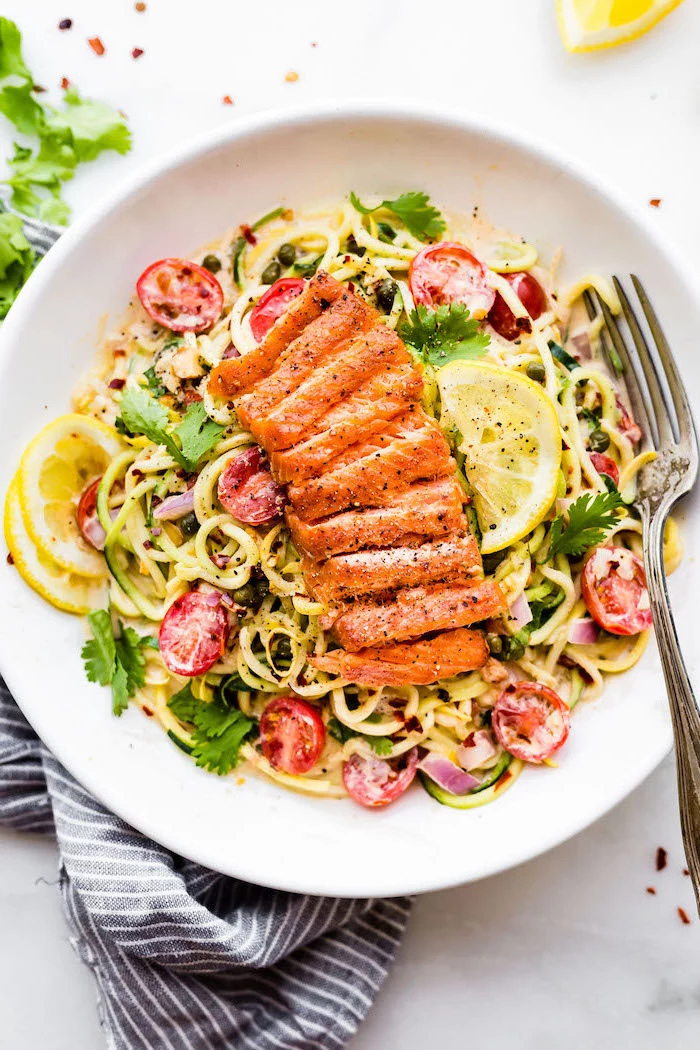
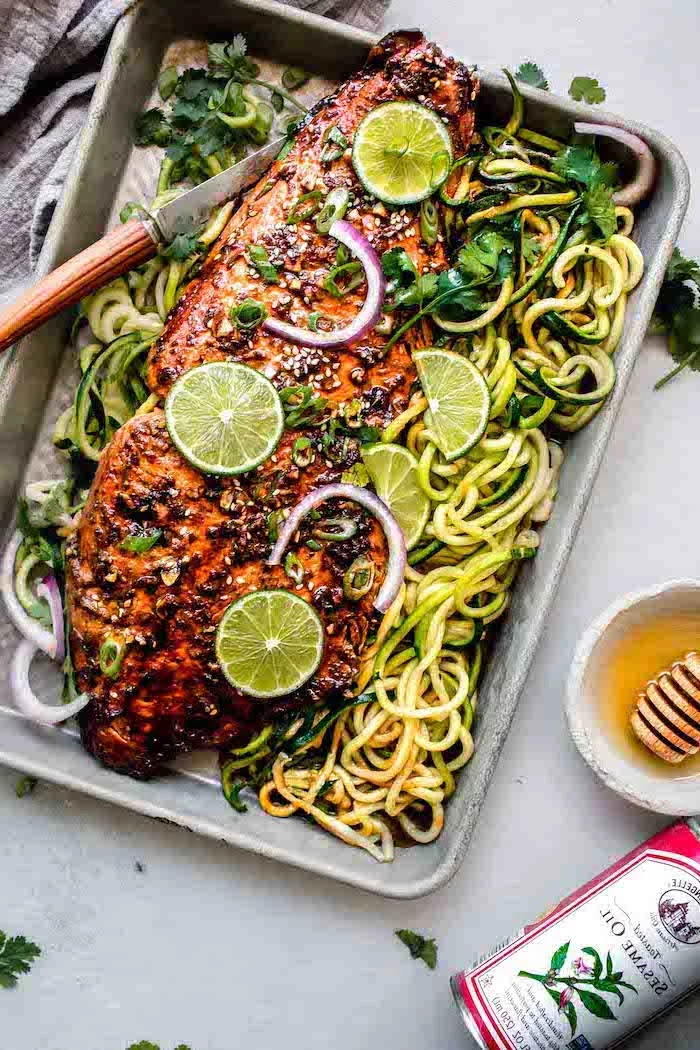
Is it better to peel the zucchini first?
For the best texture and nutrition, leave the skin on. The skin of the zucchini contains a high concentration of fiber and antioxidants. It also provides structural integrity, helping the noodles hold their shape better during cooking. Just be sure to give the zucchini a good wash before spiralizing.
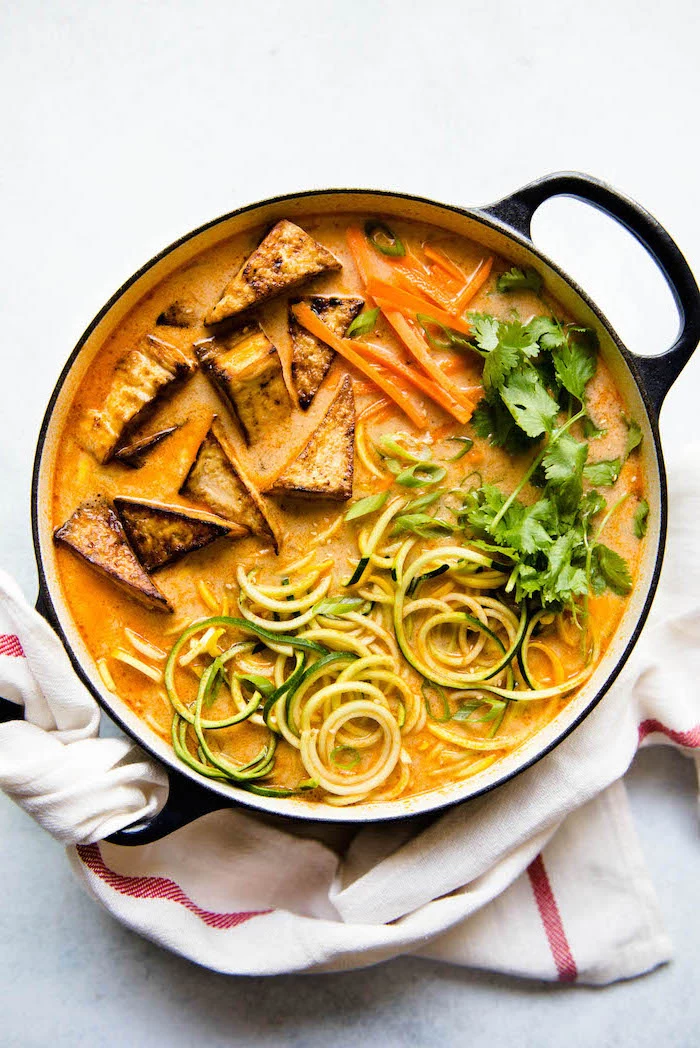
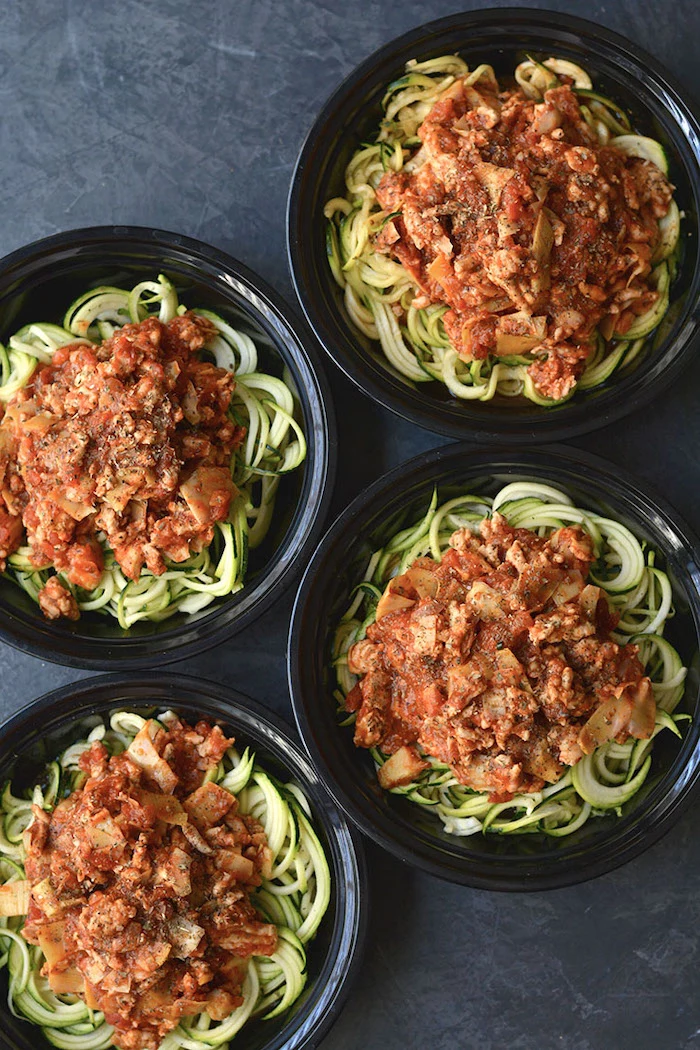
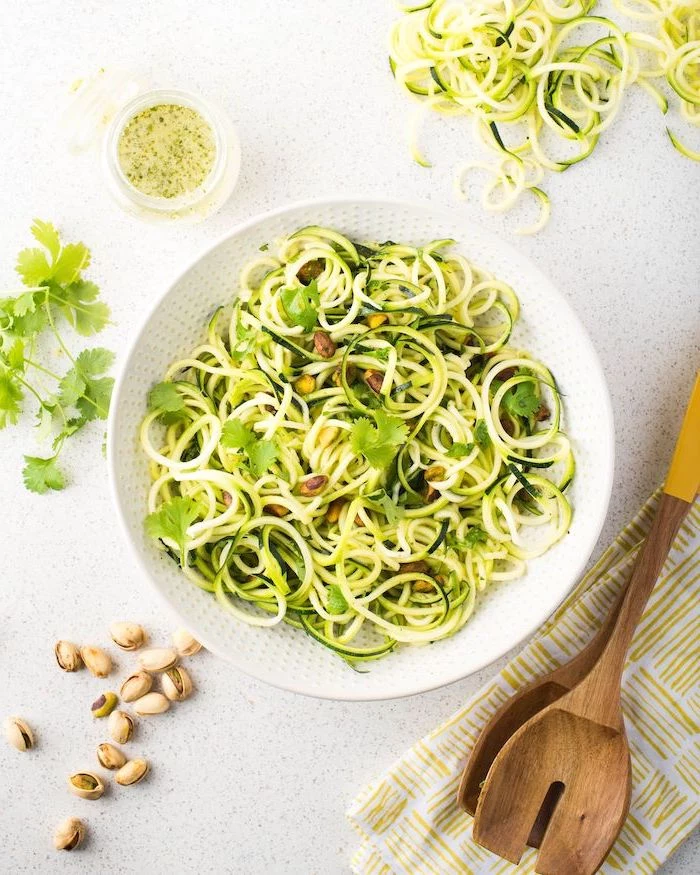
Create layers of texture for a more satisfying dish. The softness of the zoodles is a great starting point. Add crunch with toasted pine nuts, walnuts, or breadcrumbs. Introduce a creamy element with crumbled goat cheese, a dollop of ricotta, or avocado. This textural play is what elevates a simple zoodle bowl into a truly memorable meal.
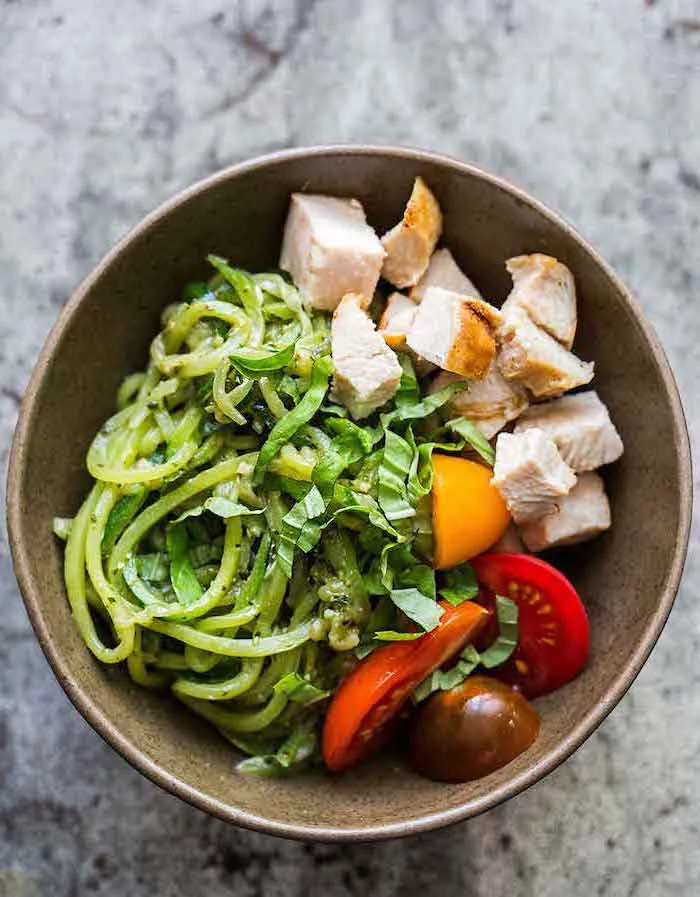
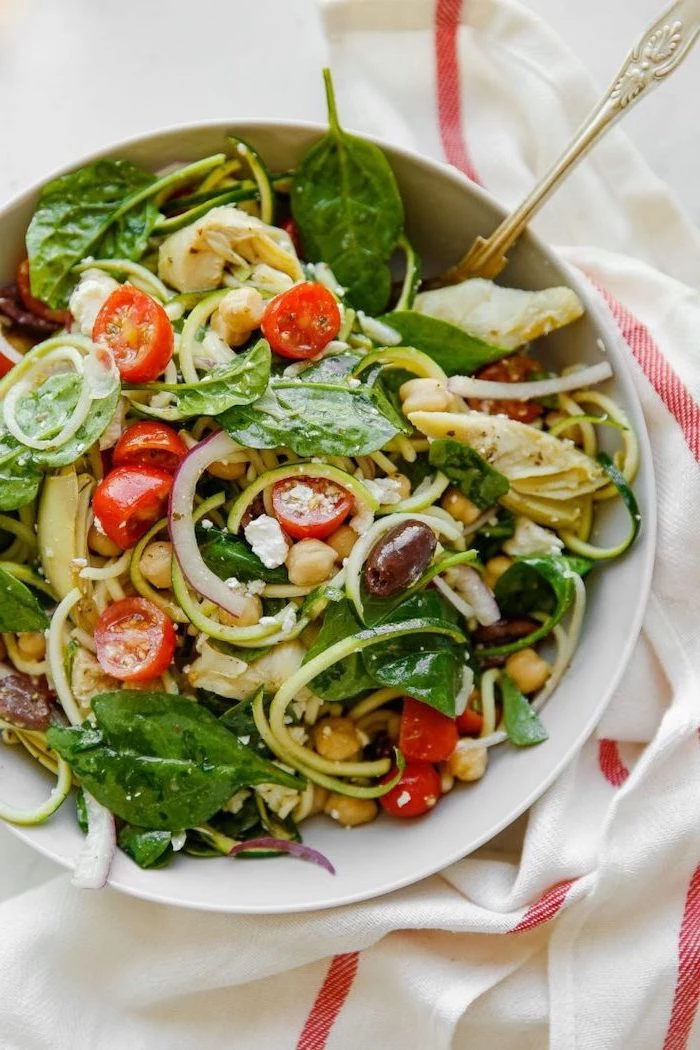
A cup of cooked spaghetti has around 220 calories, while a cup of zucchini noodles has only about 30-40 calories.
This incredible difference is why zoodles have become a cornerstone for those seeking lighter, lower-calorie meals. It allows you to enjoy a generous, satisfying portion of ‘pasta’ and a rich sauce while keeping the meal light and energizing.
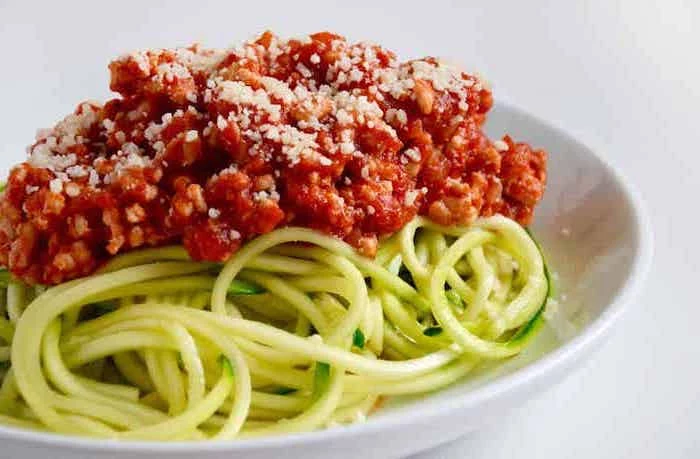
Absolutely. They are crisp, refreshing, and entirely edible raw. In fact, for maximum crunch and zero risk of sogginess, serving them raw is a foolproof method. Toss them with a bright vinaigrette, some cherry tomatoes, and feta for a perfect summer salad. This is the ultimate fast and fresh preparation.










